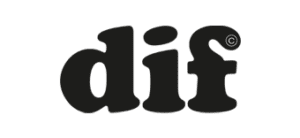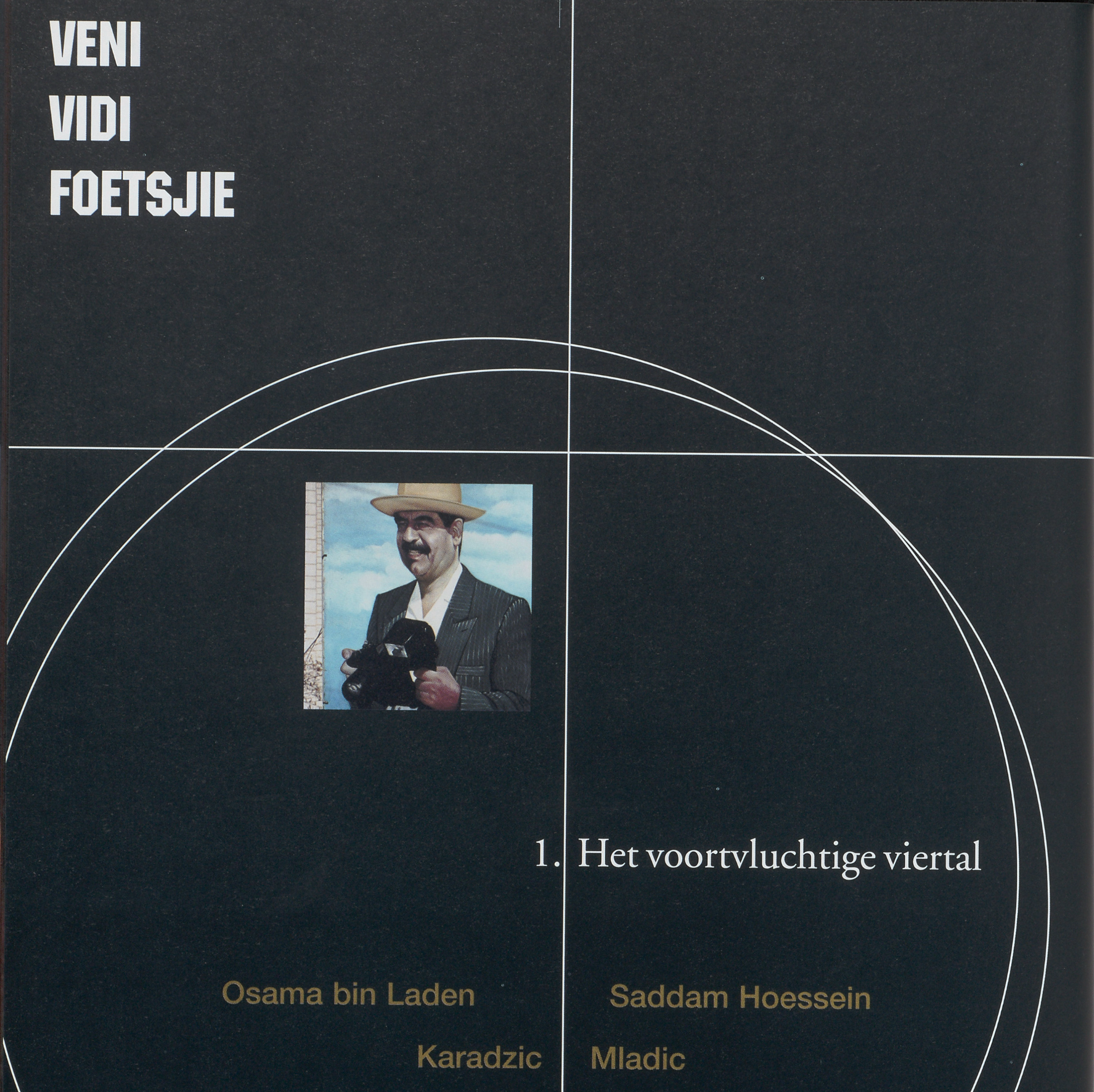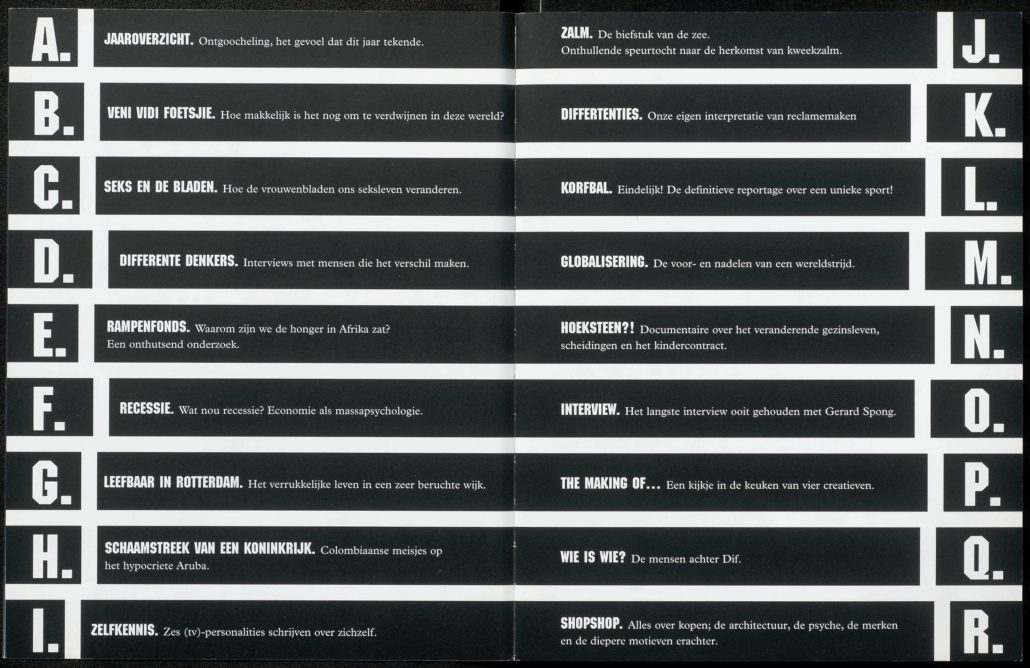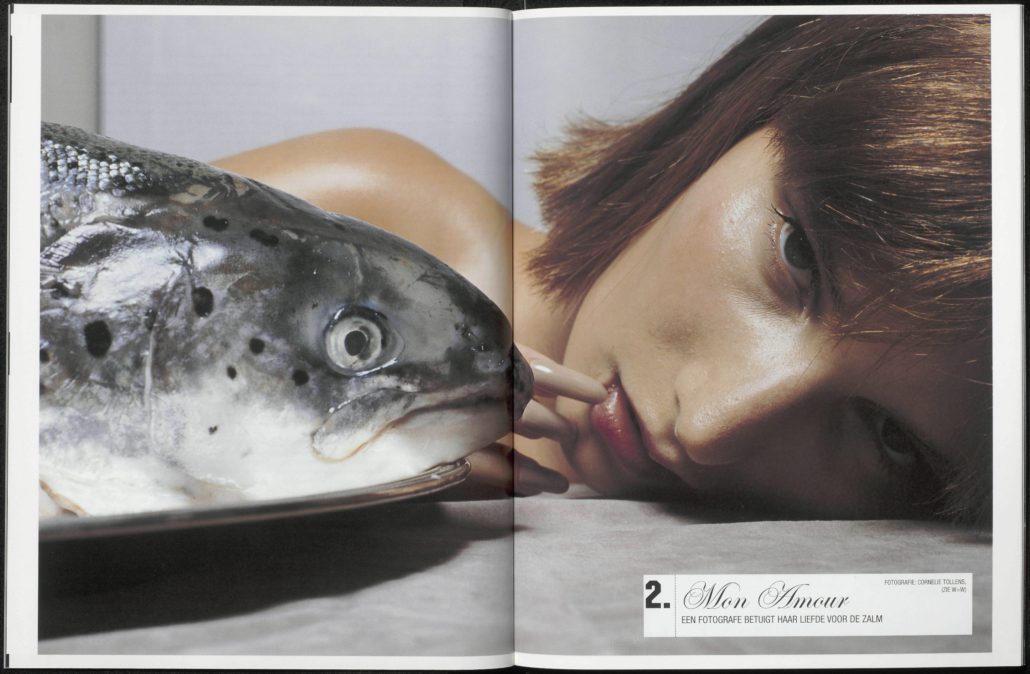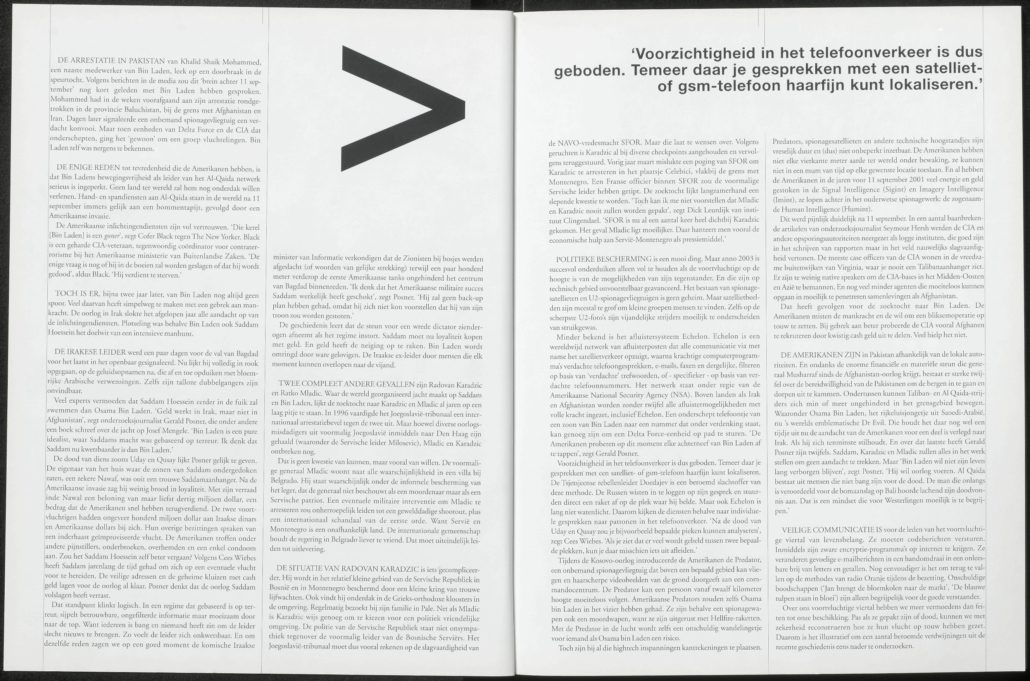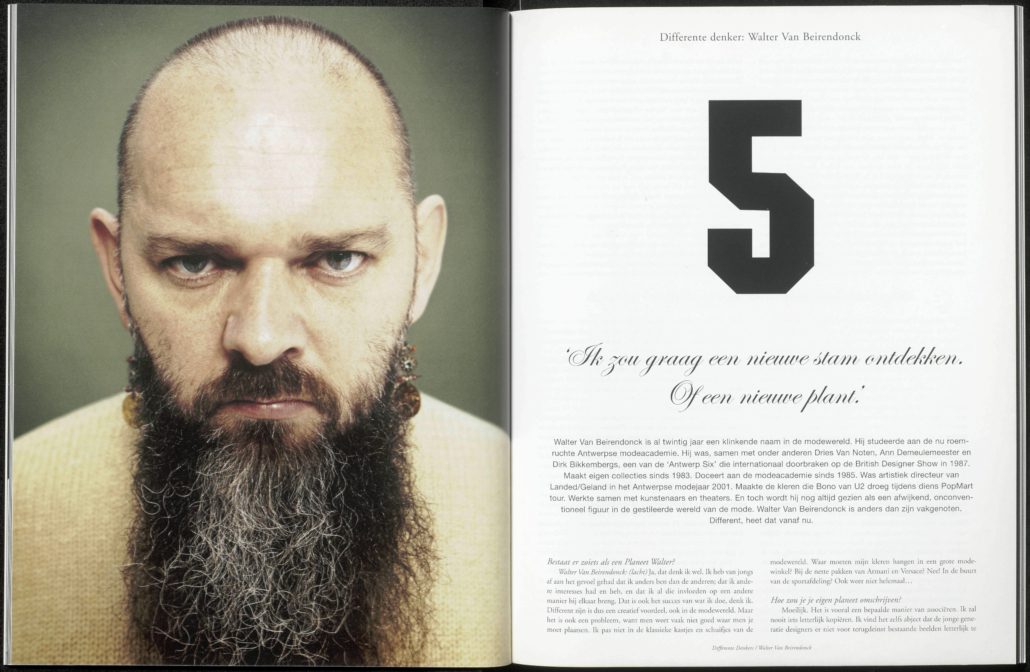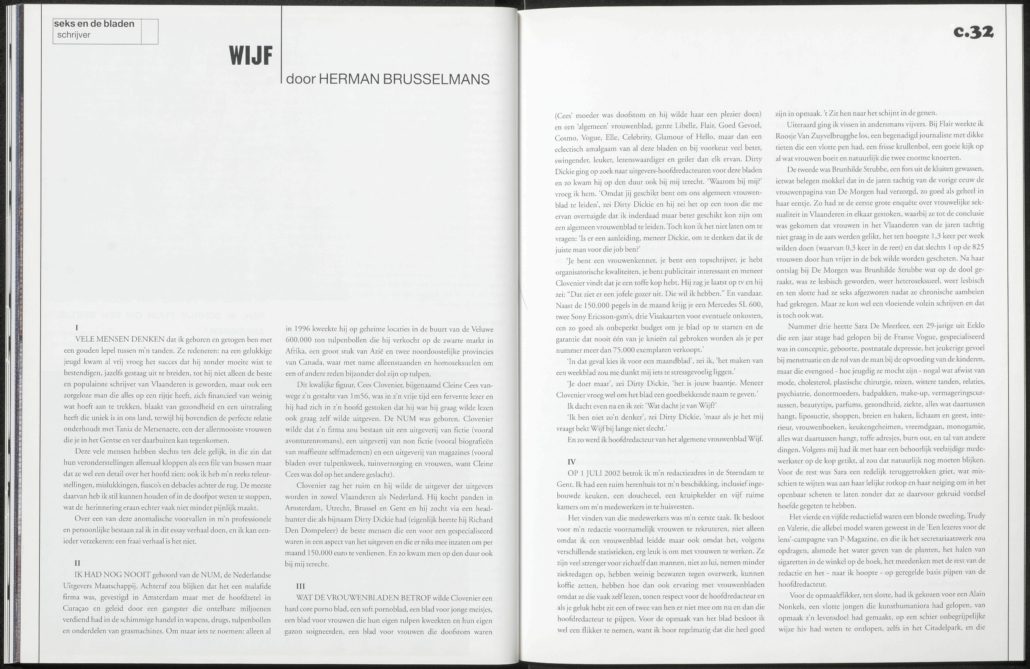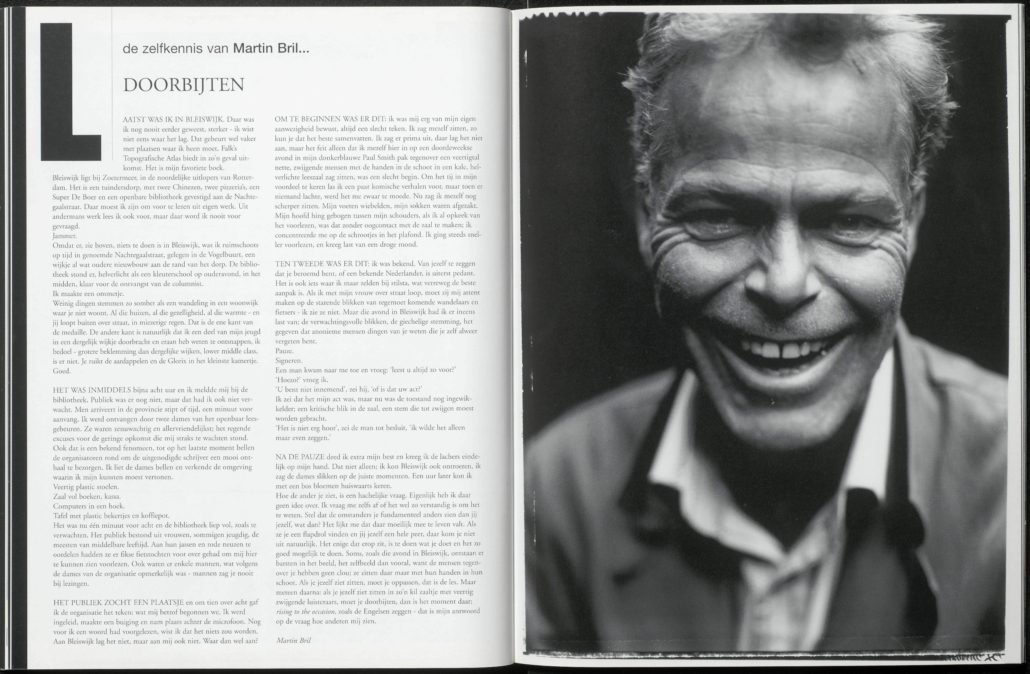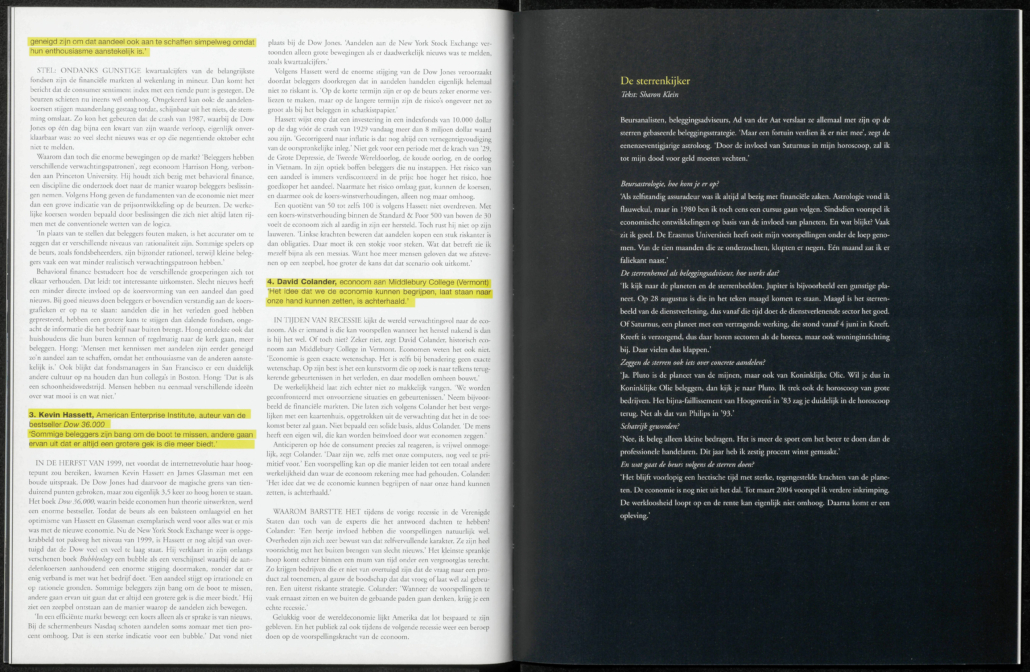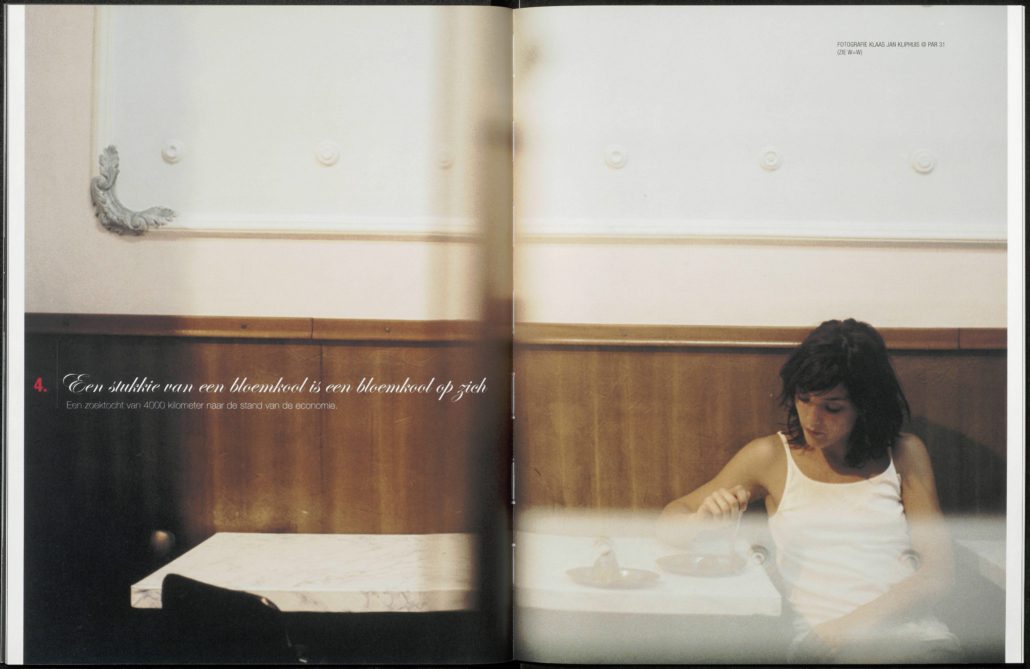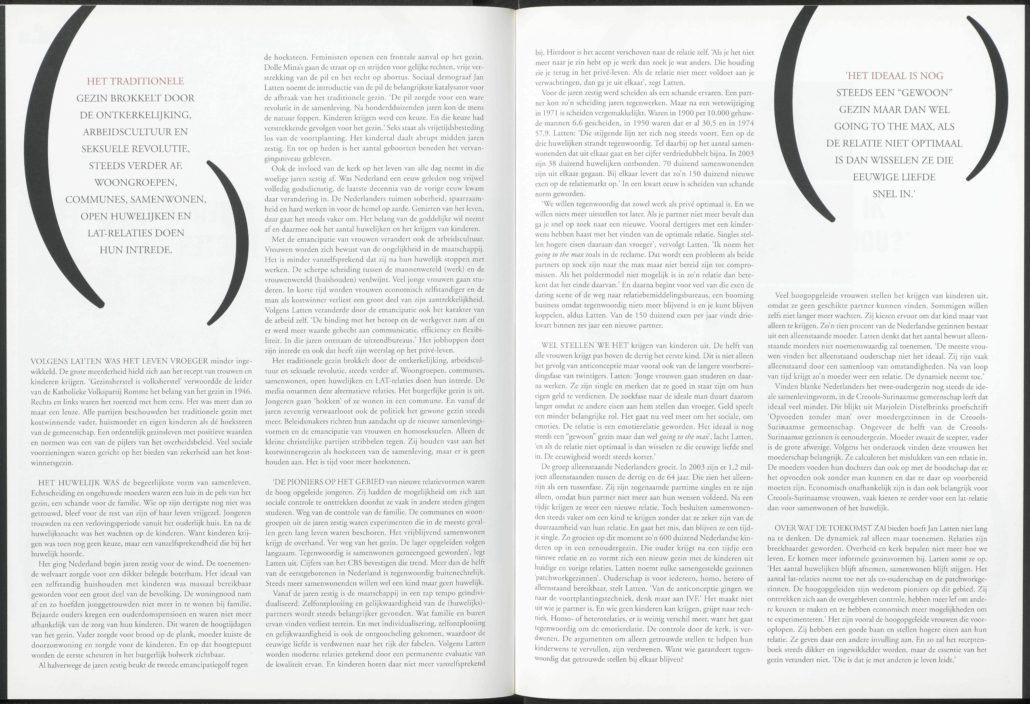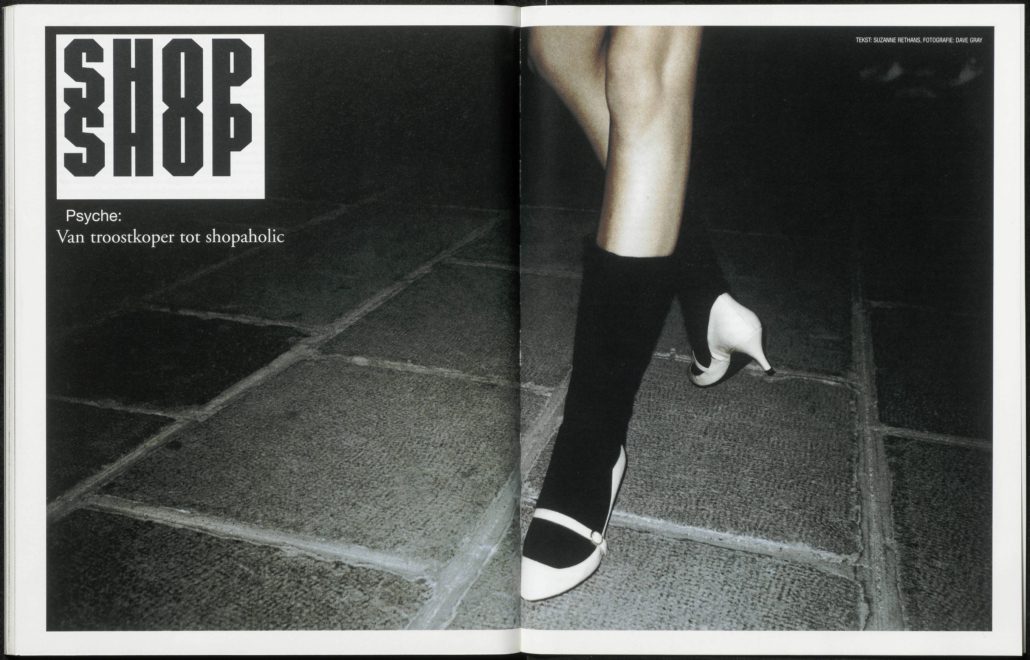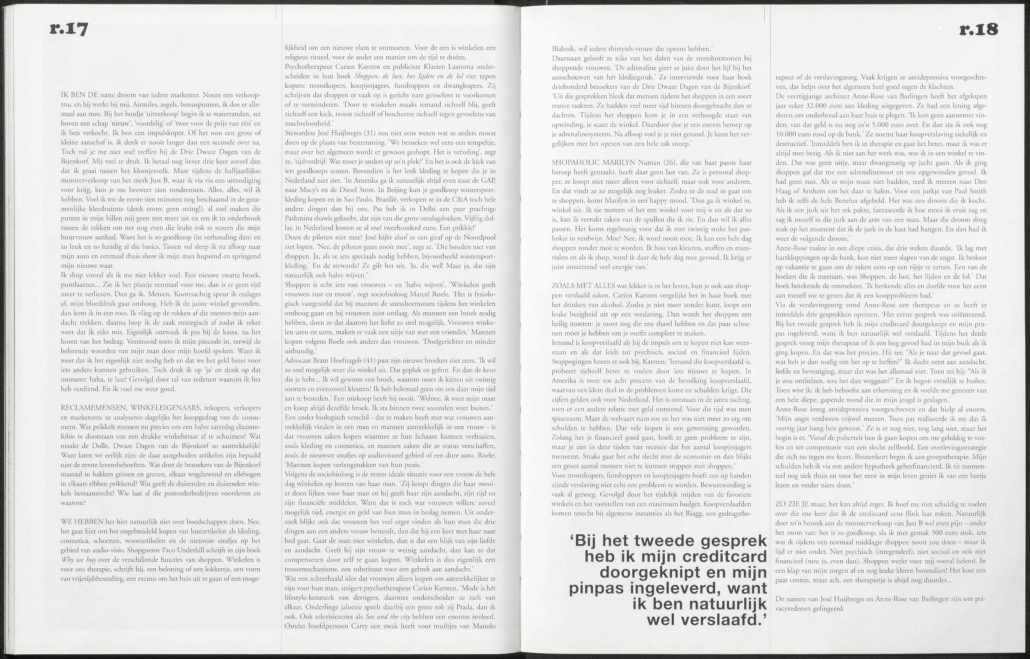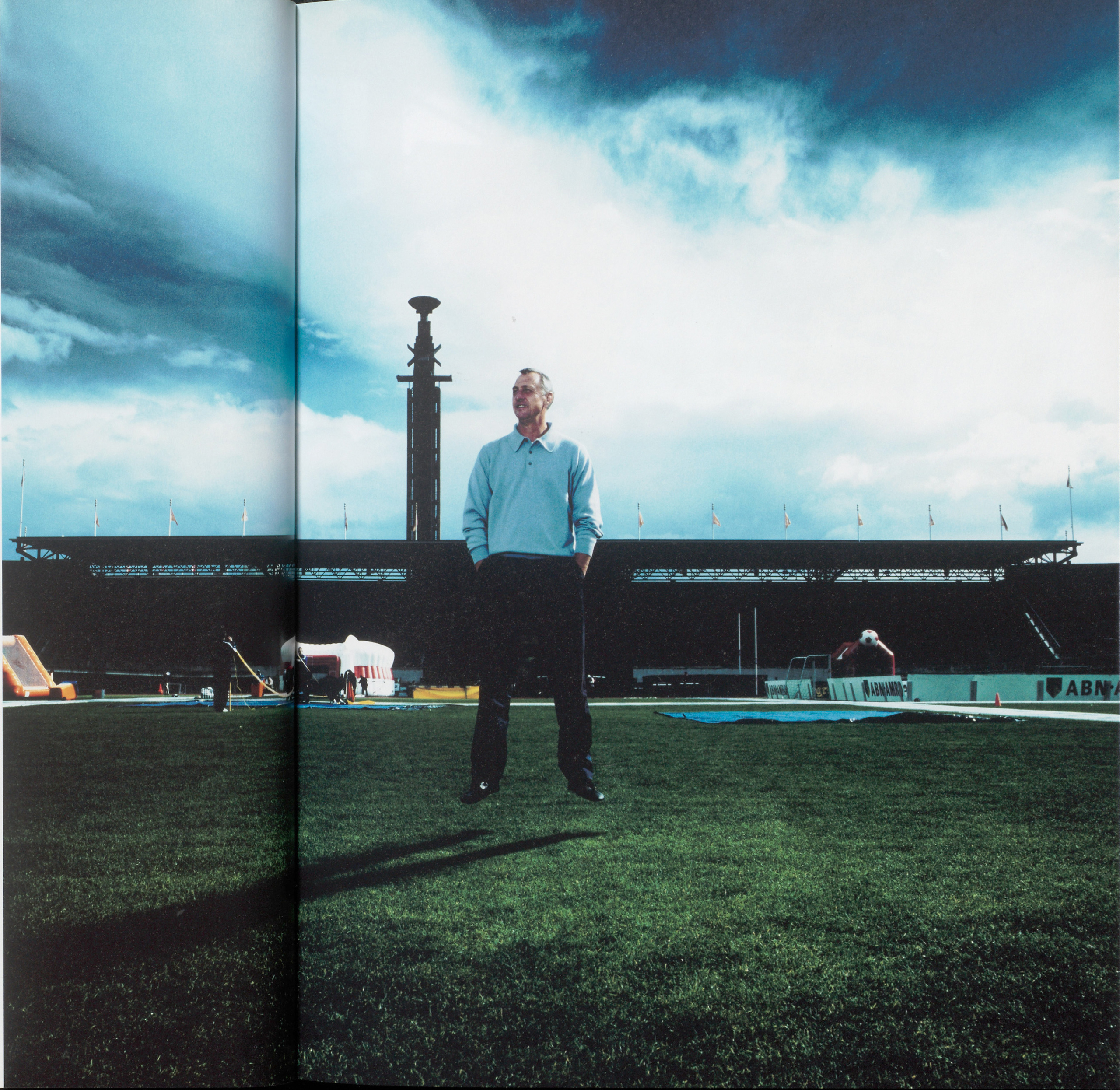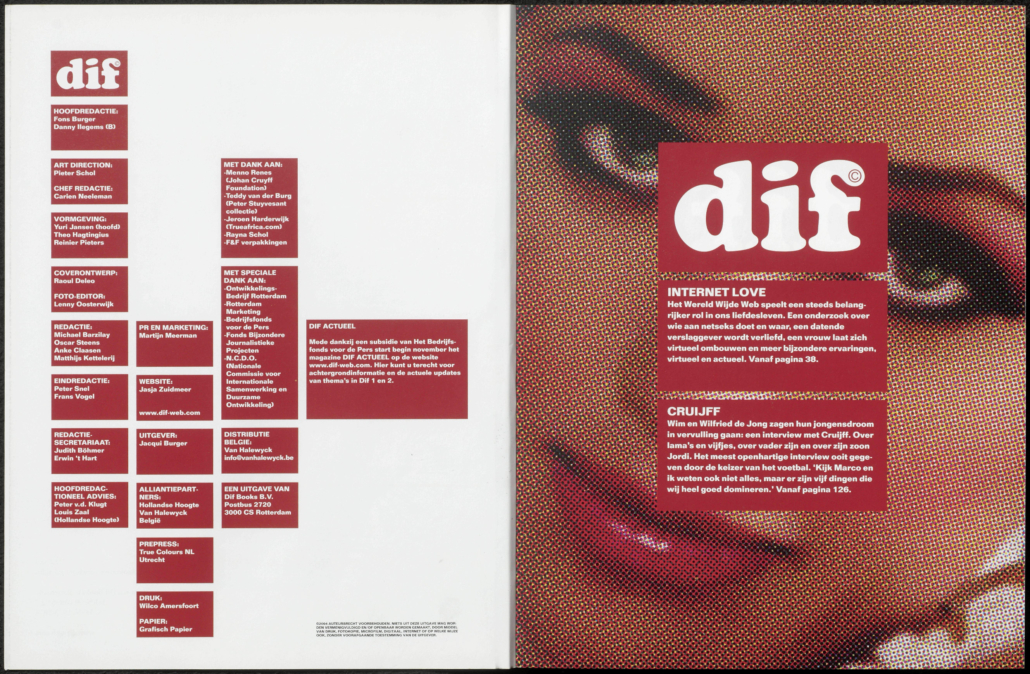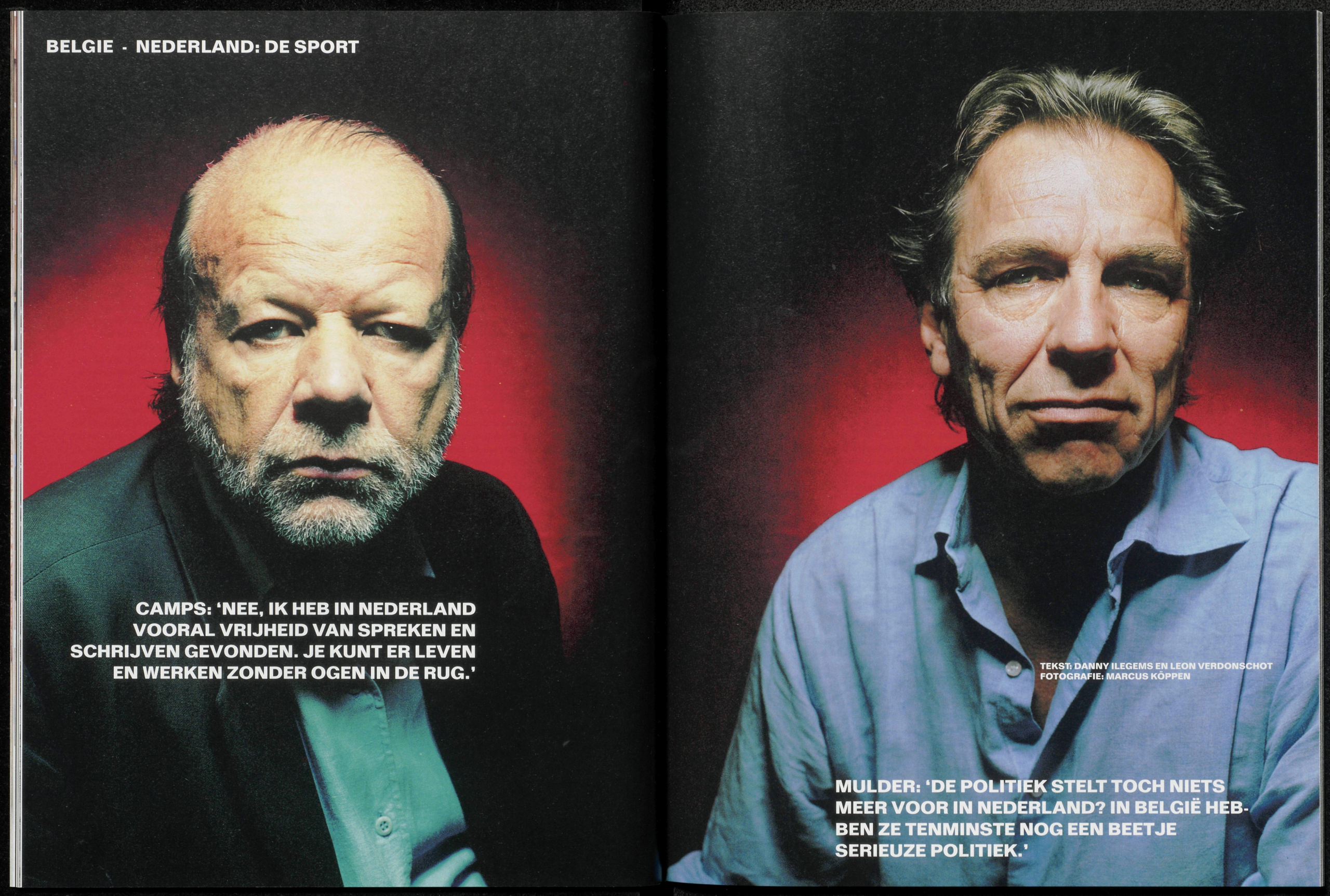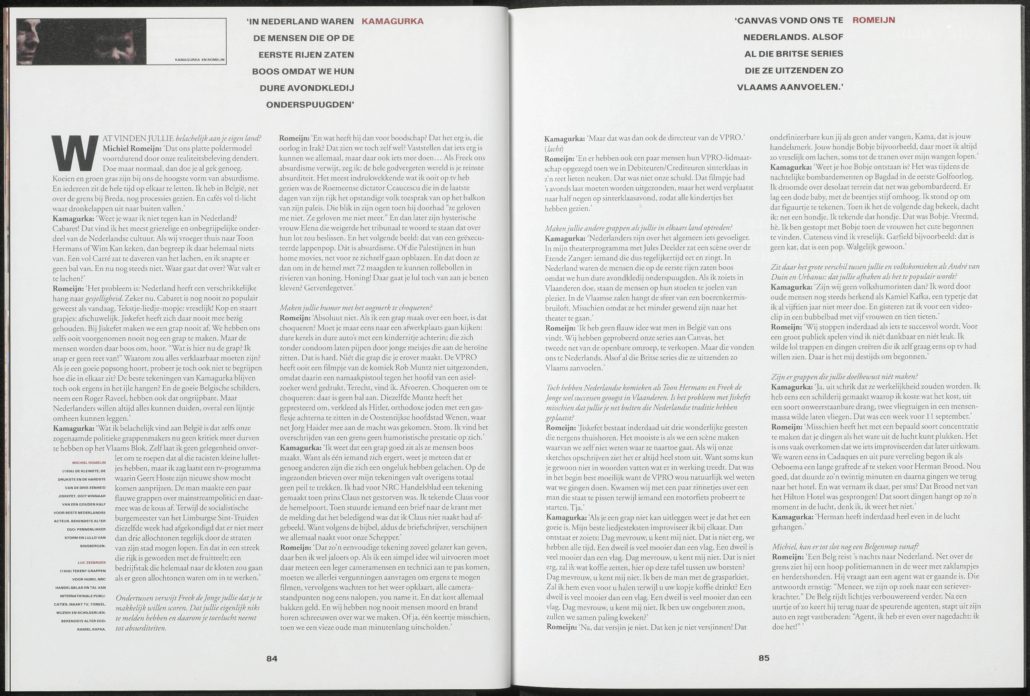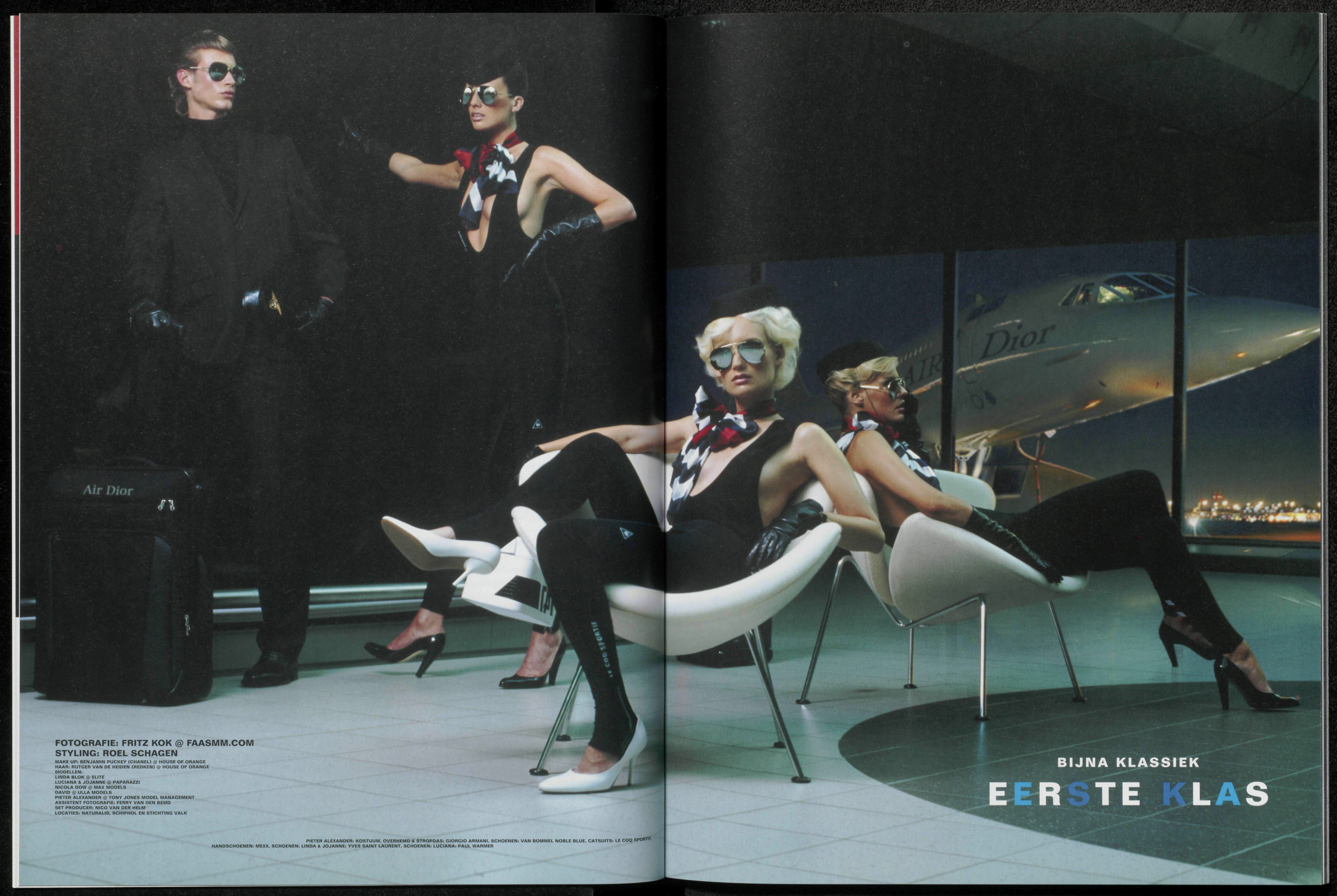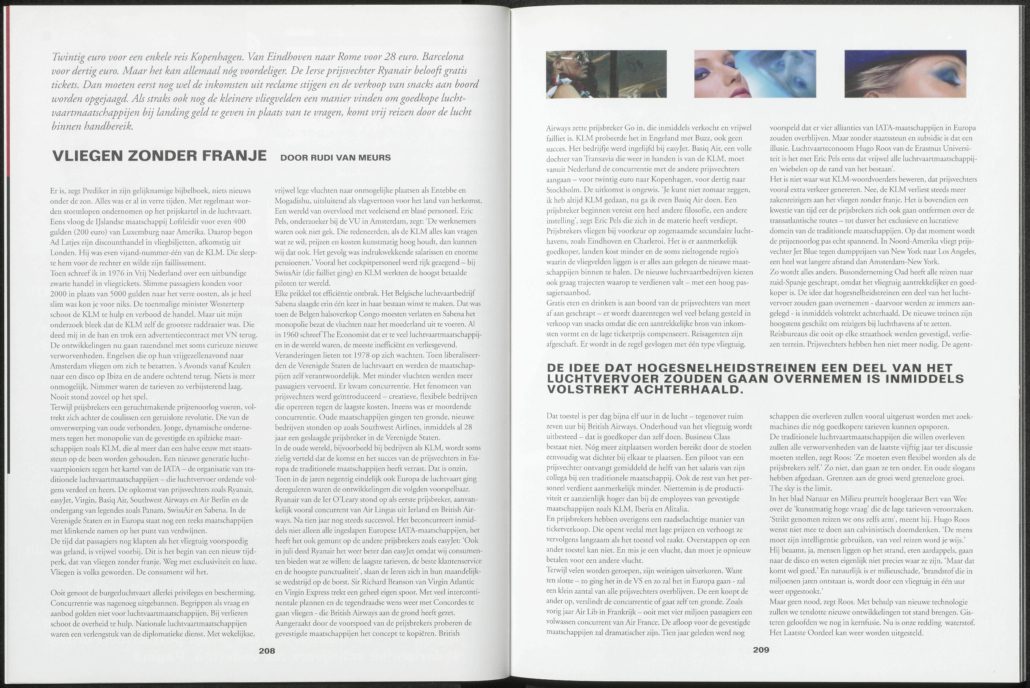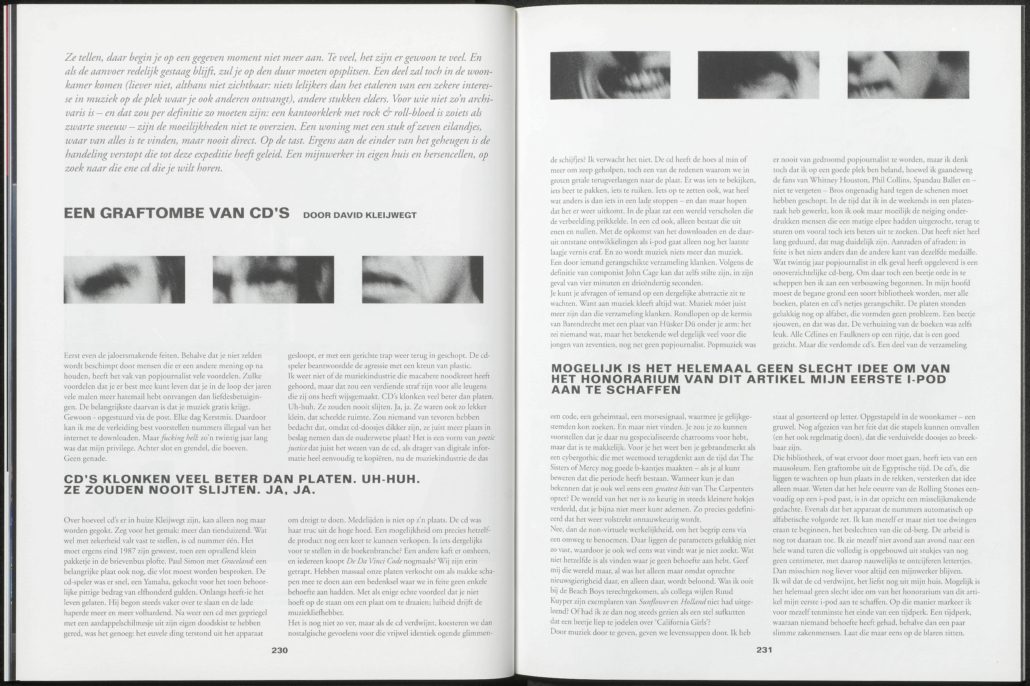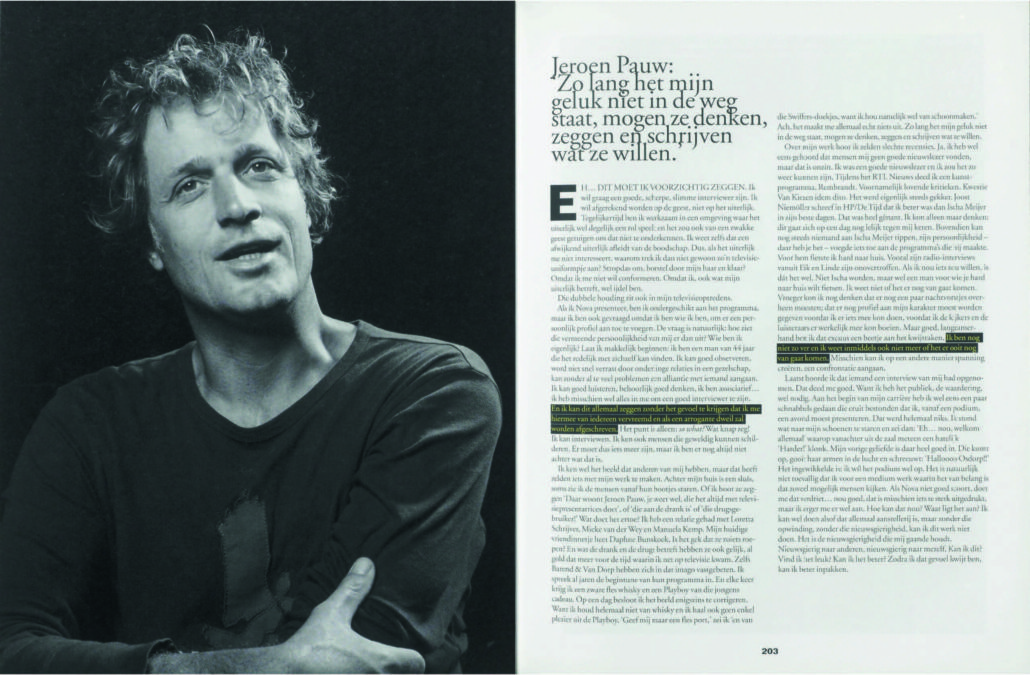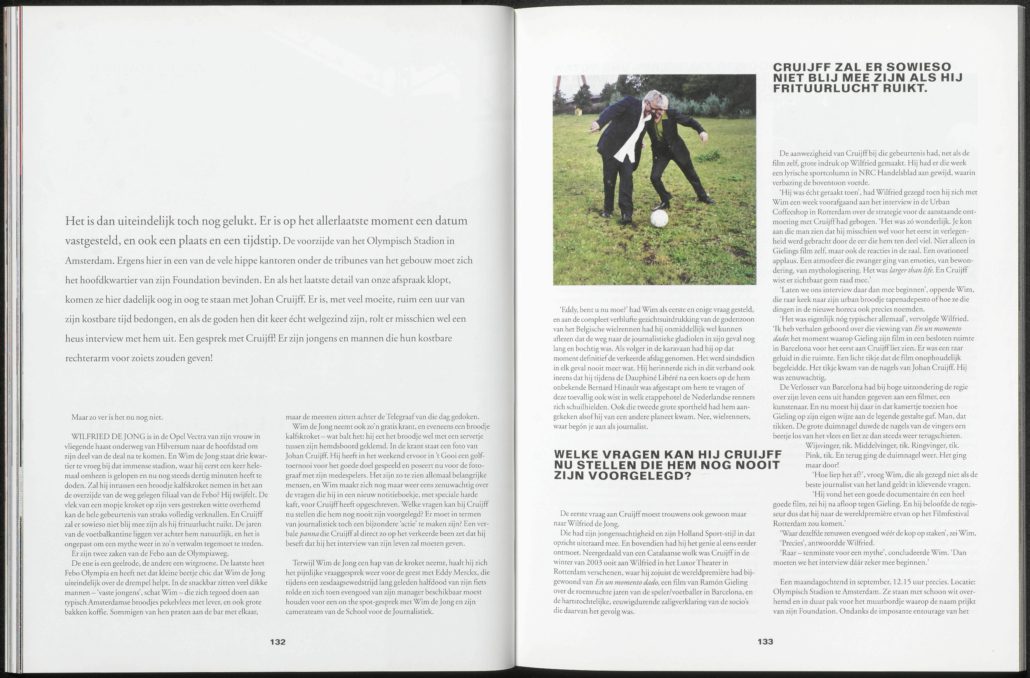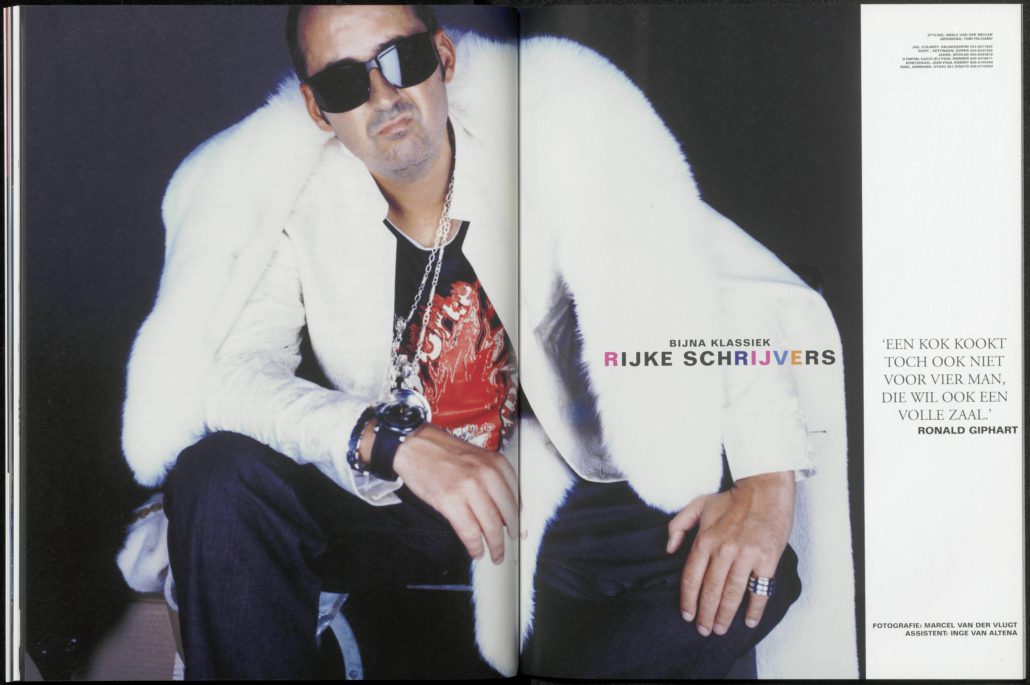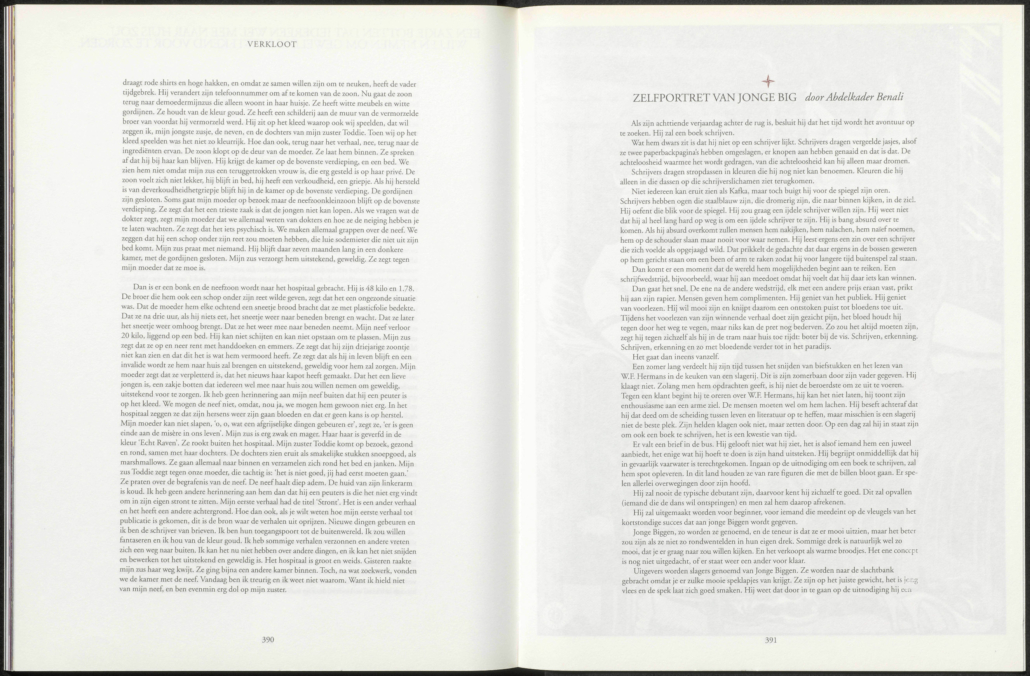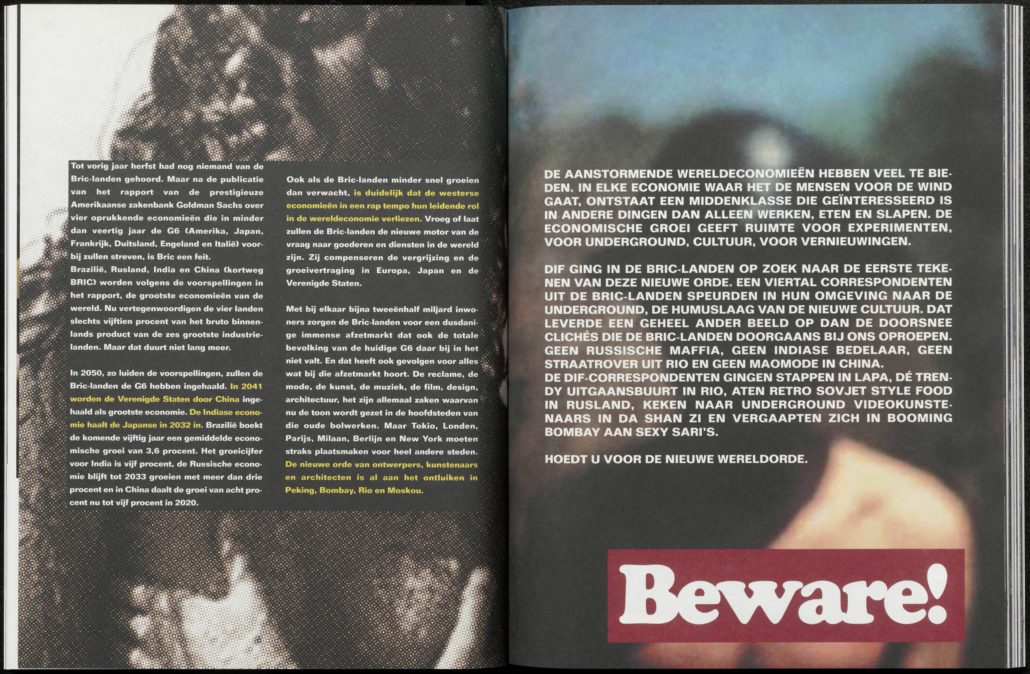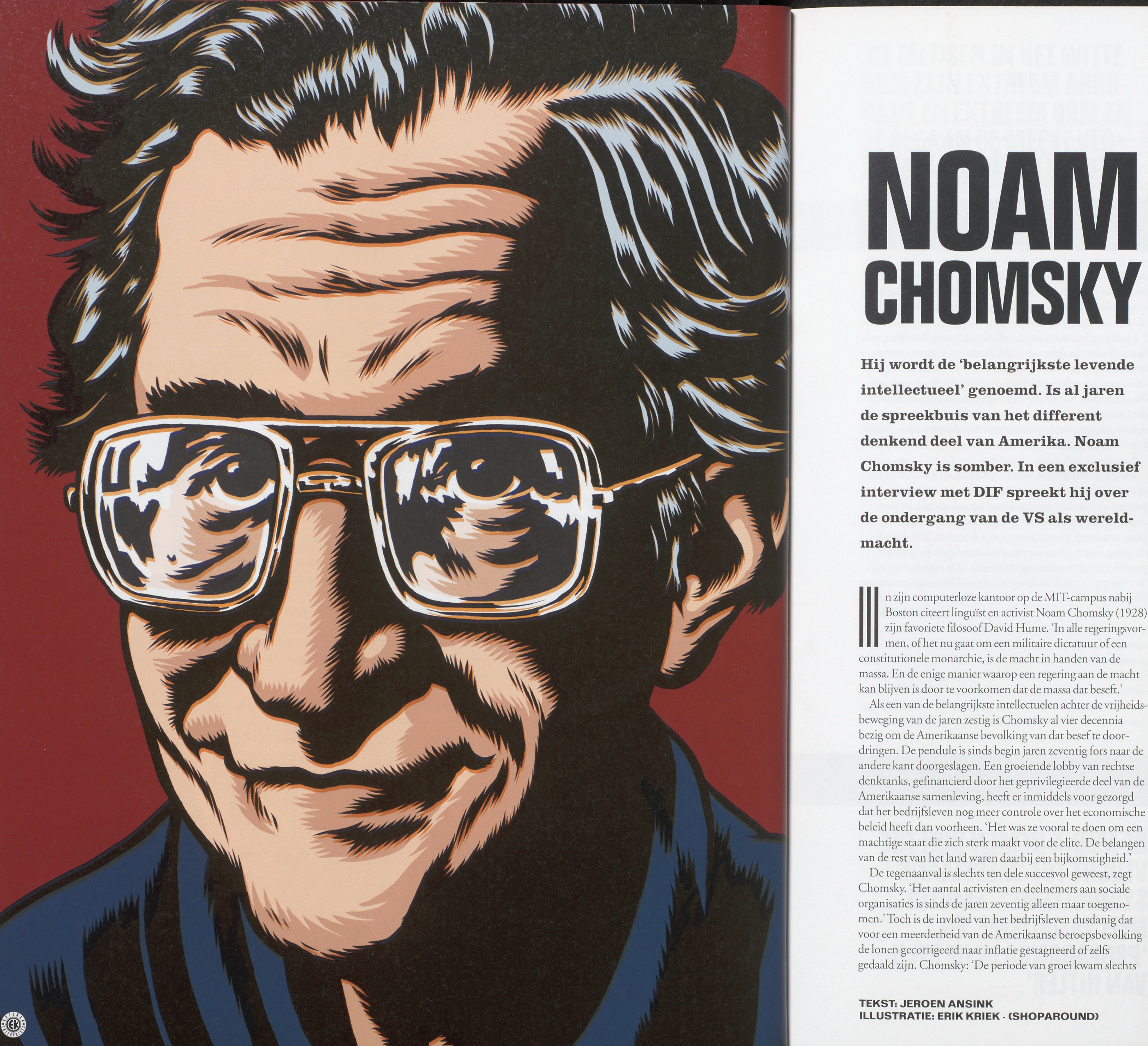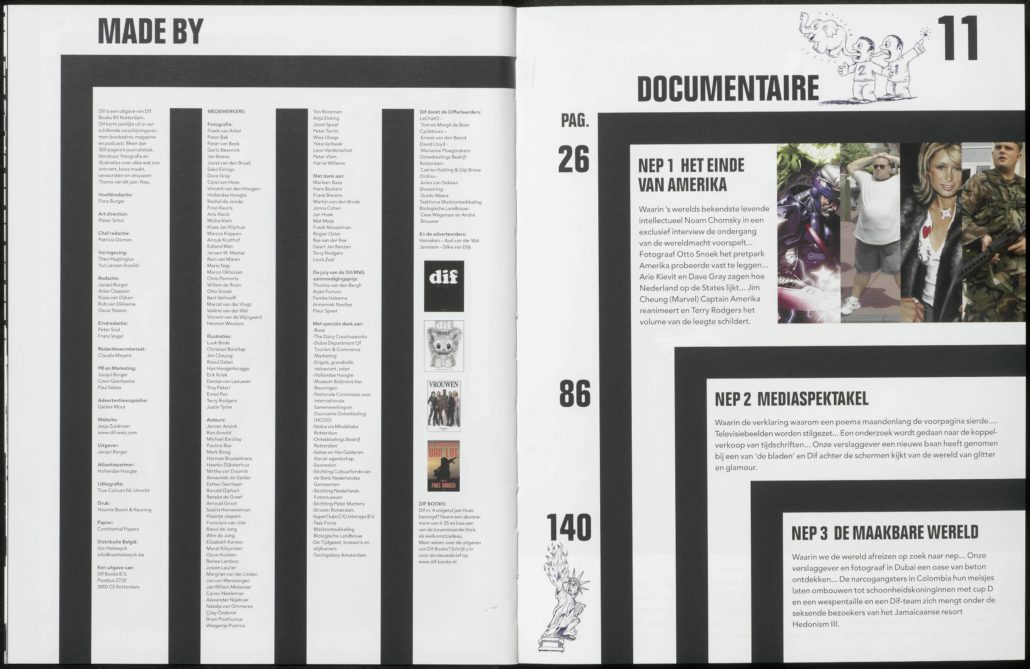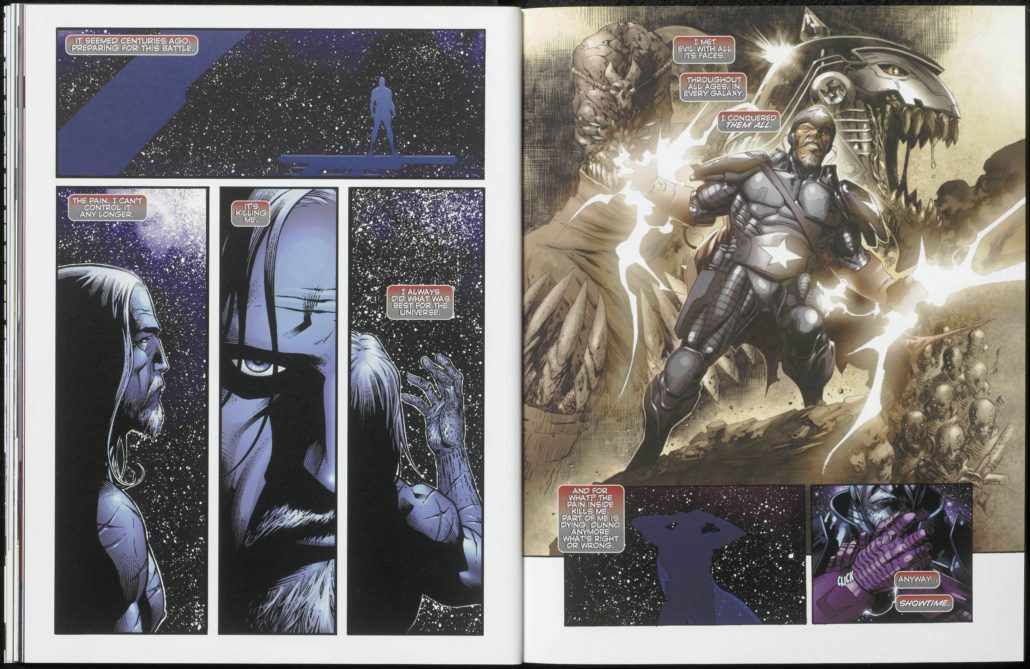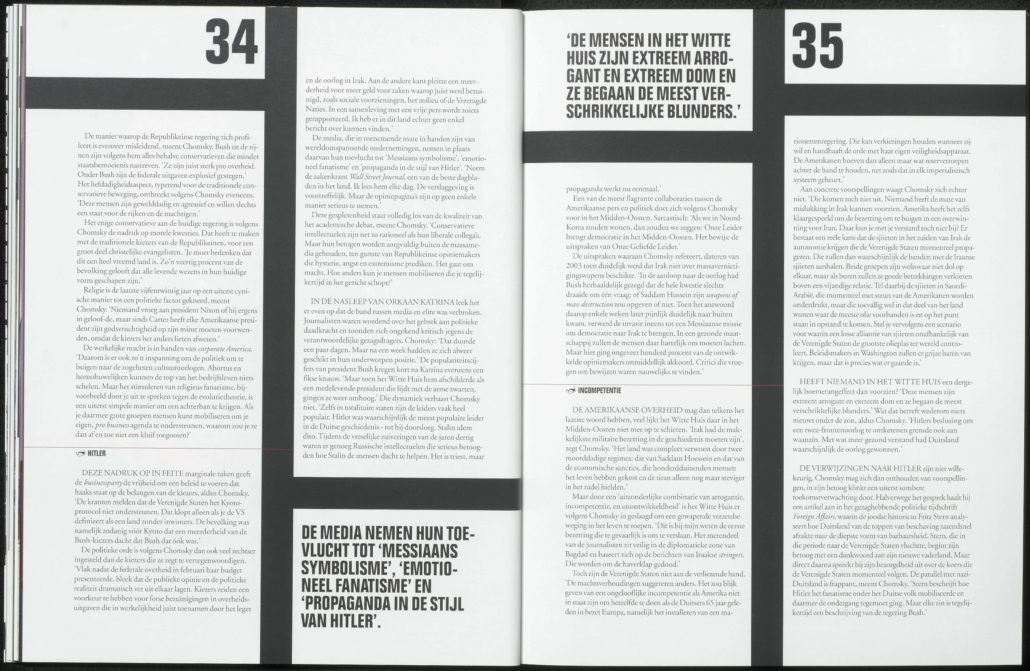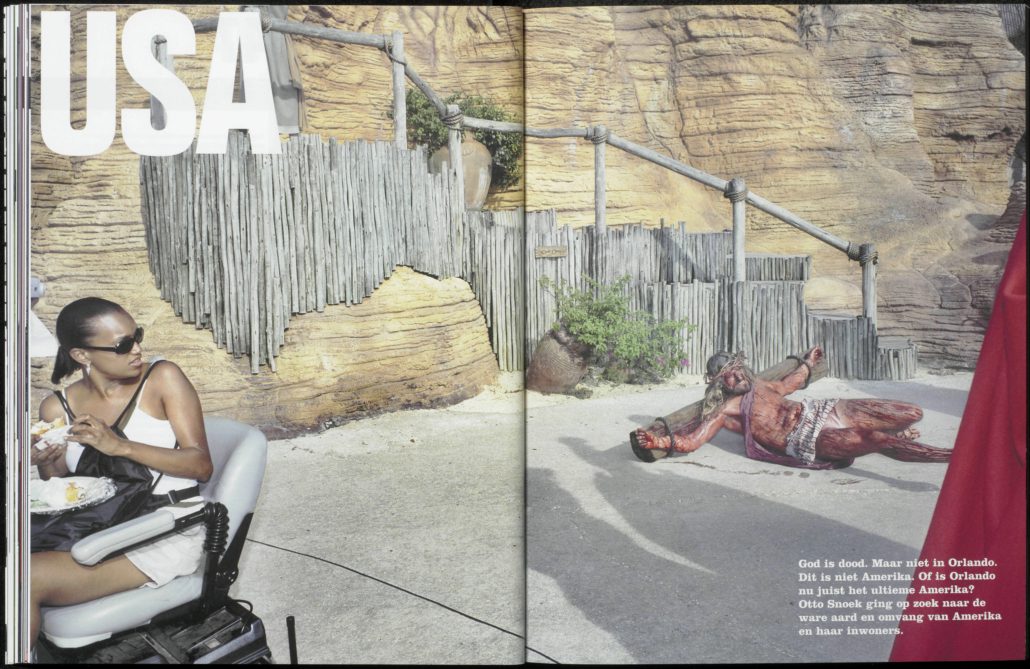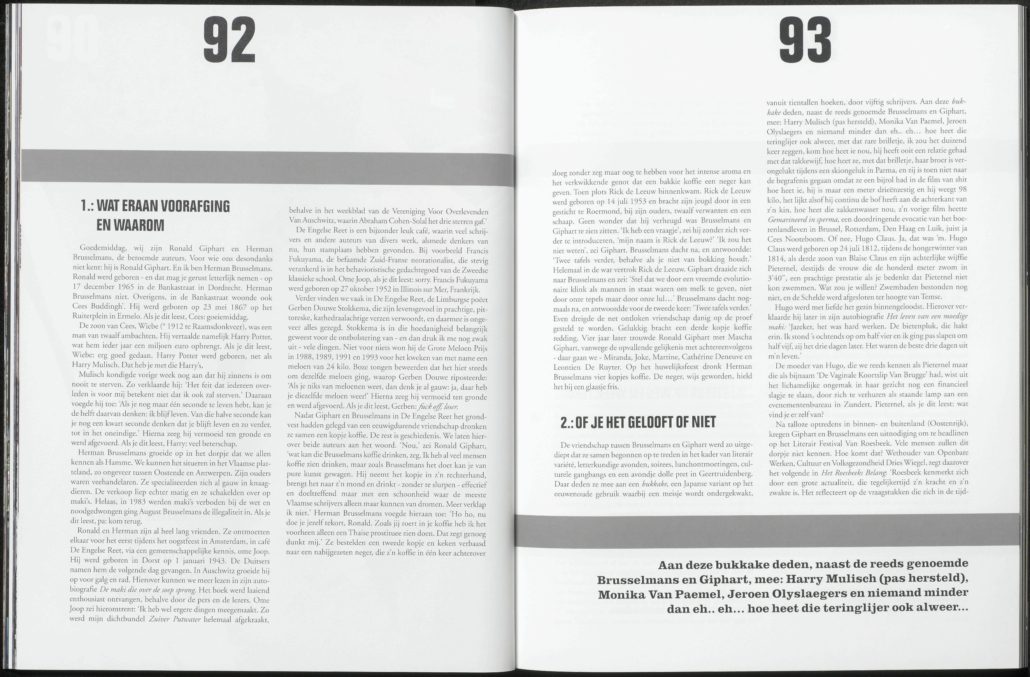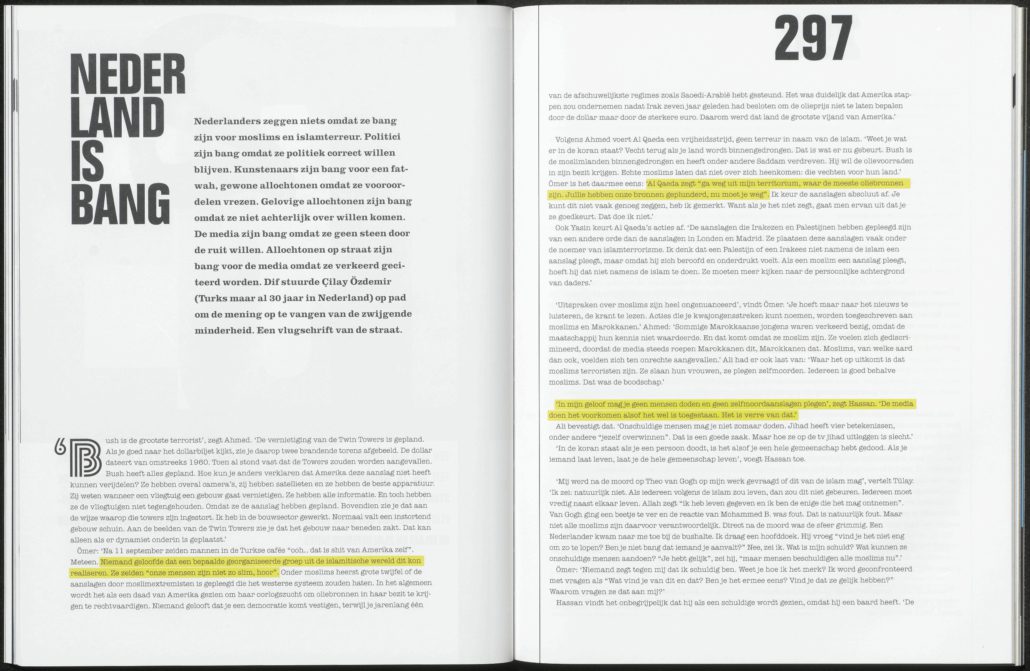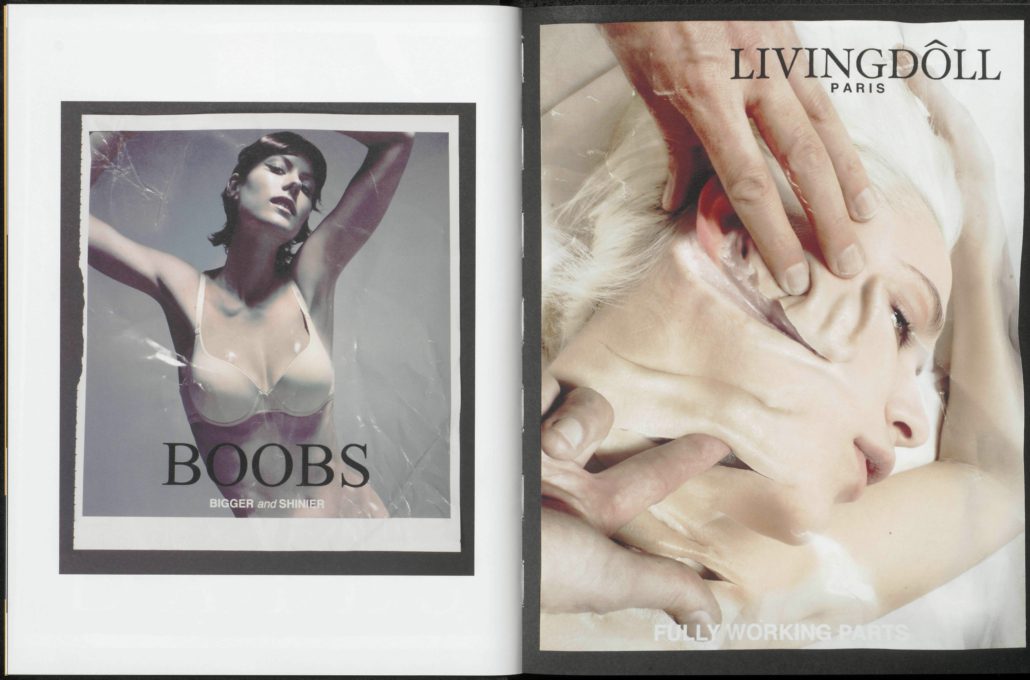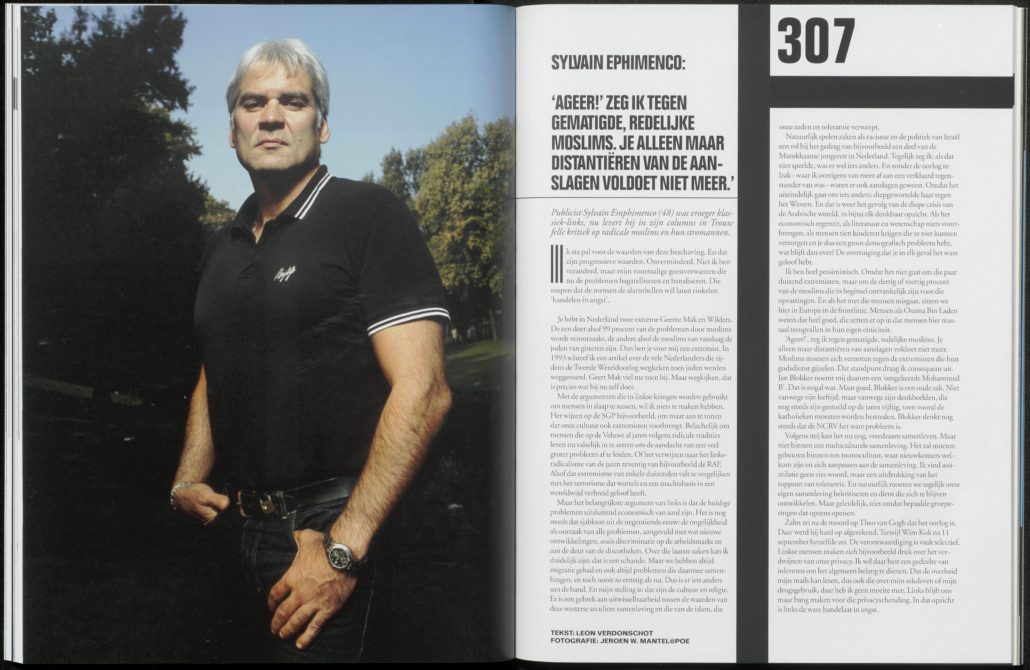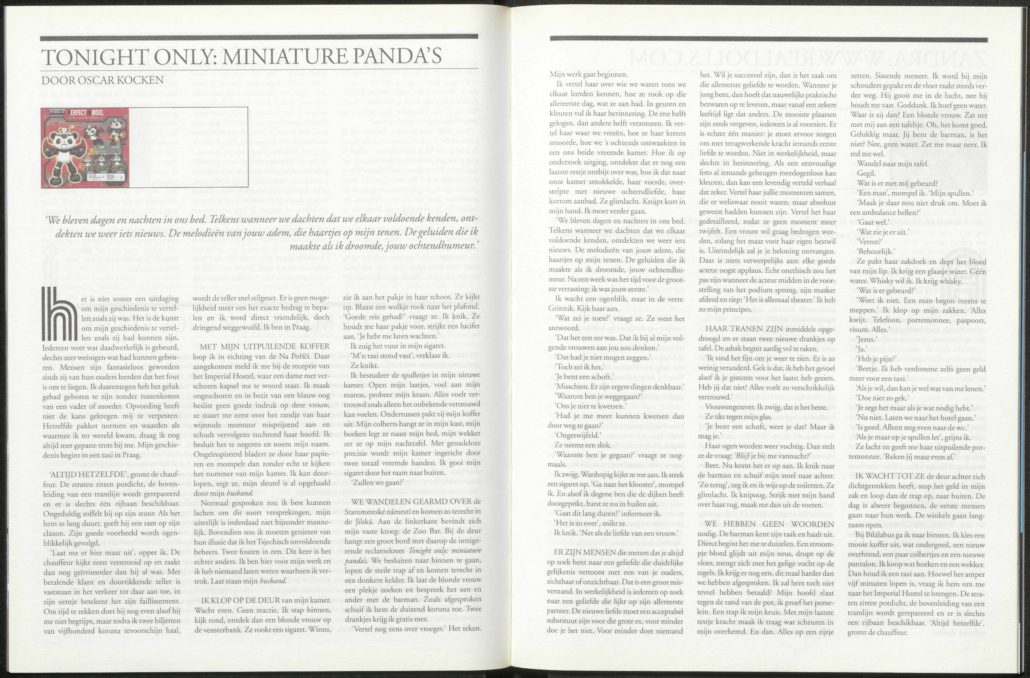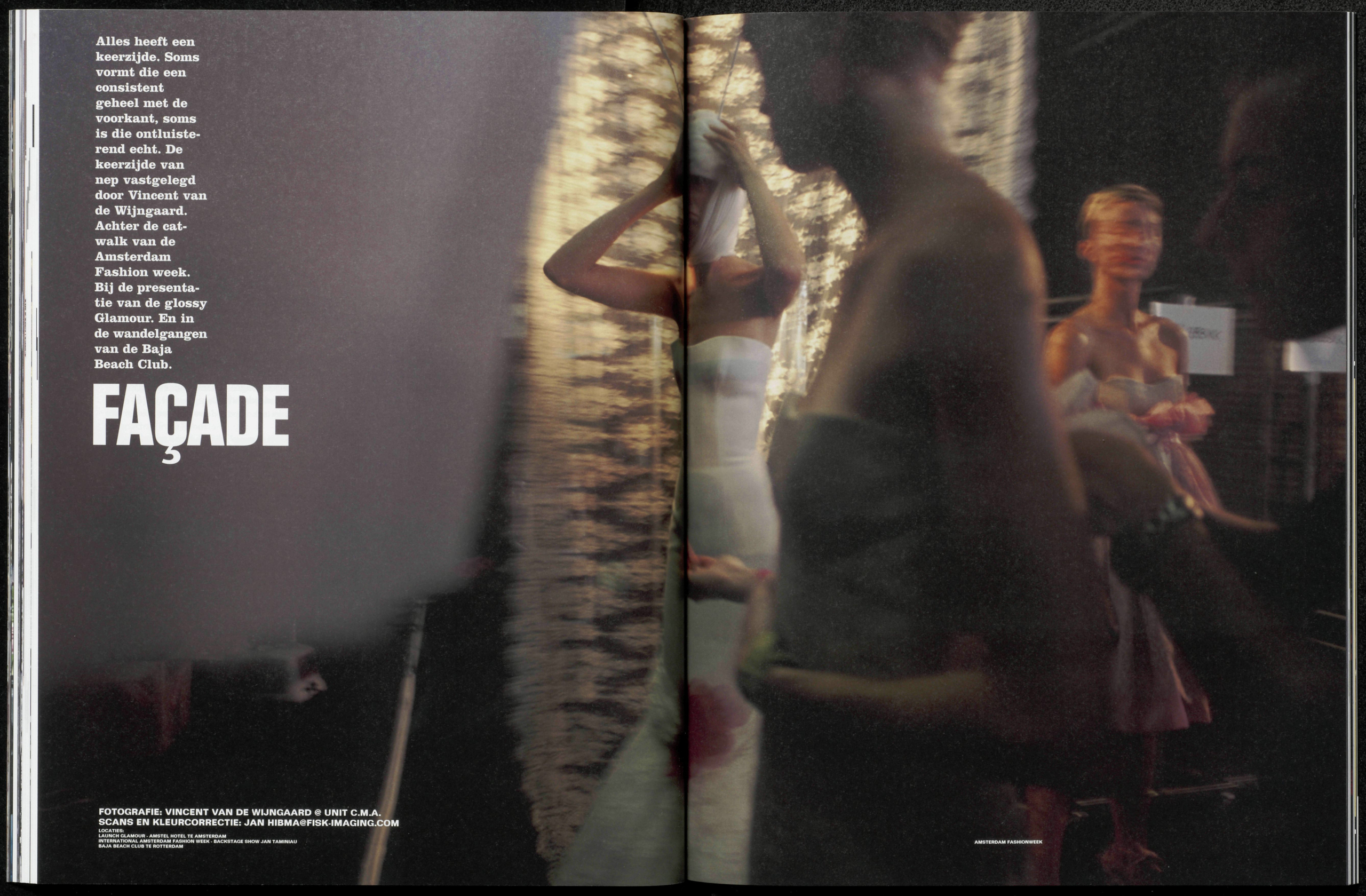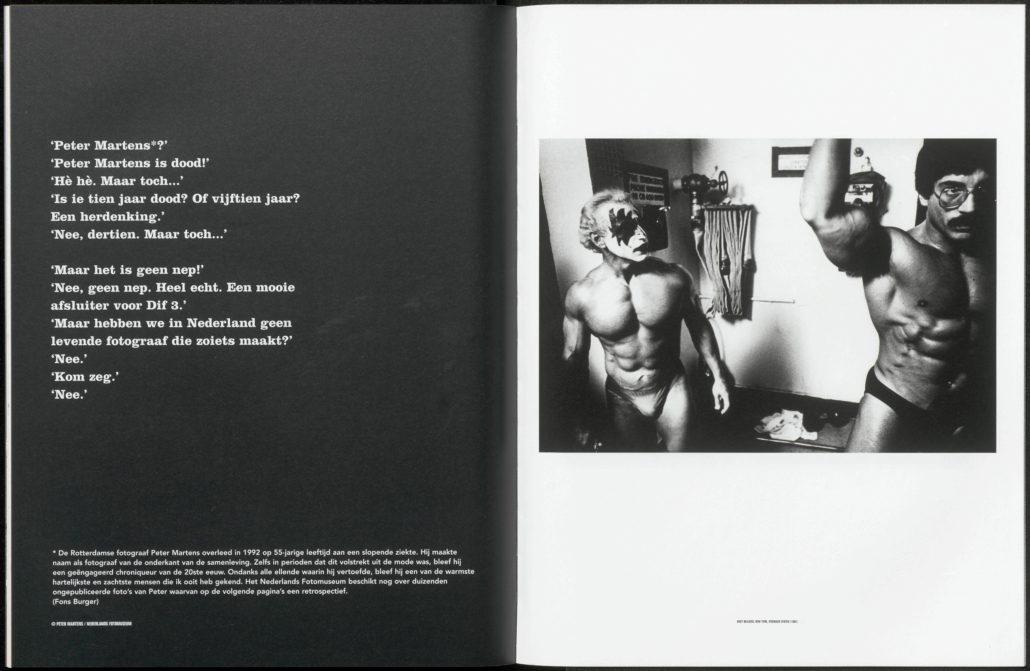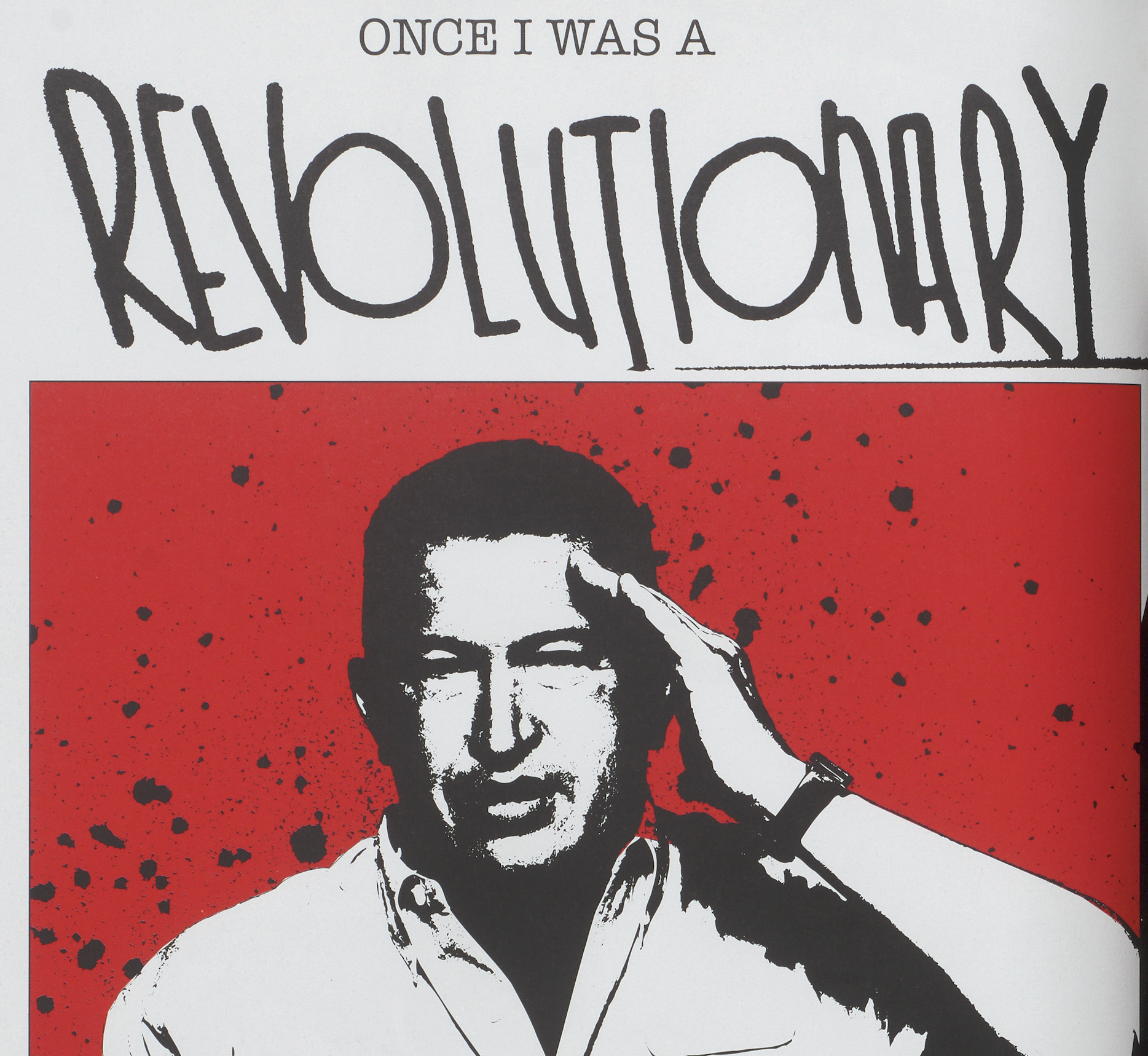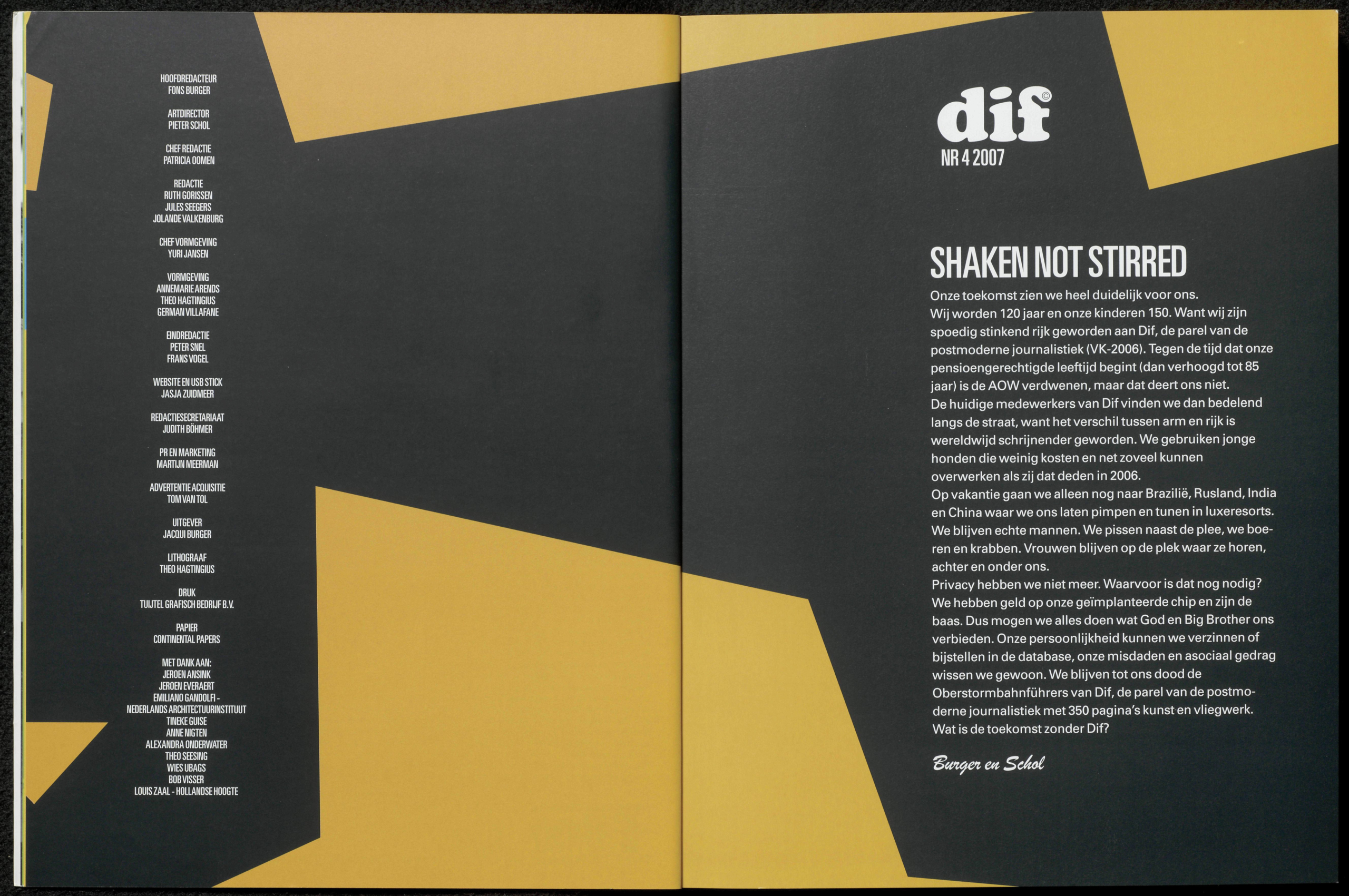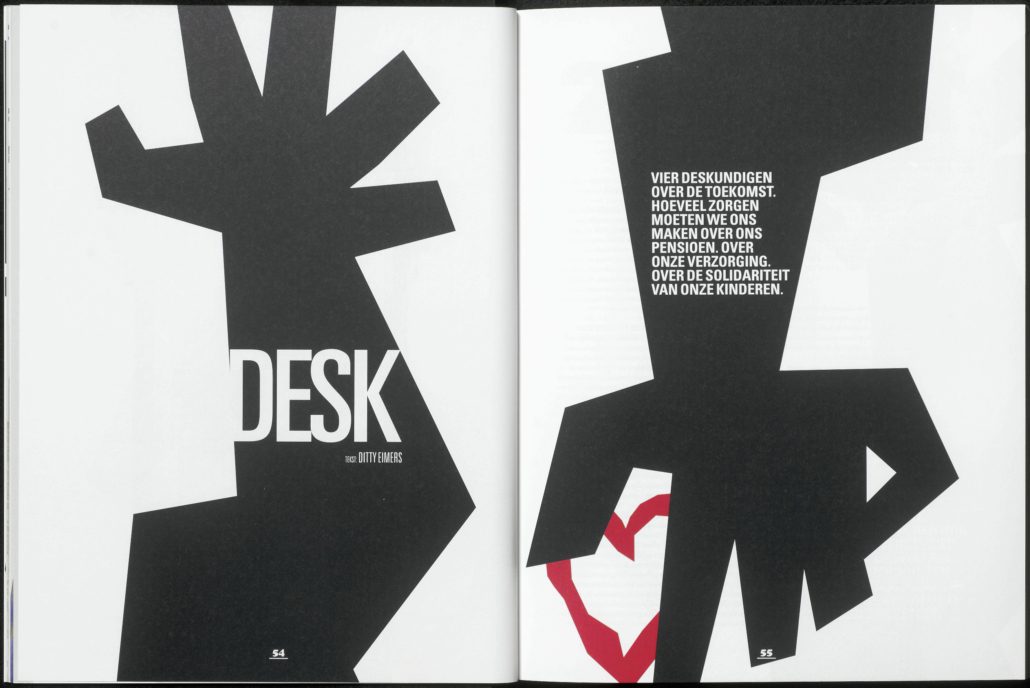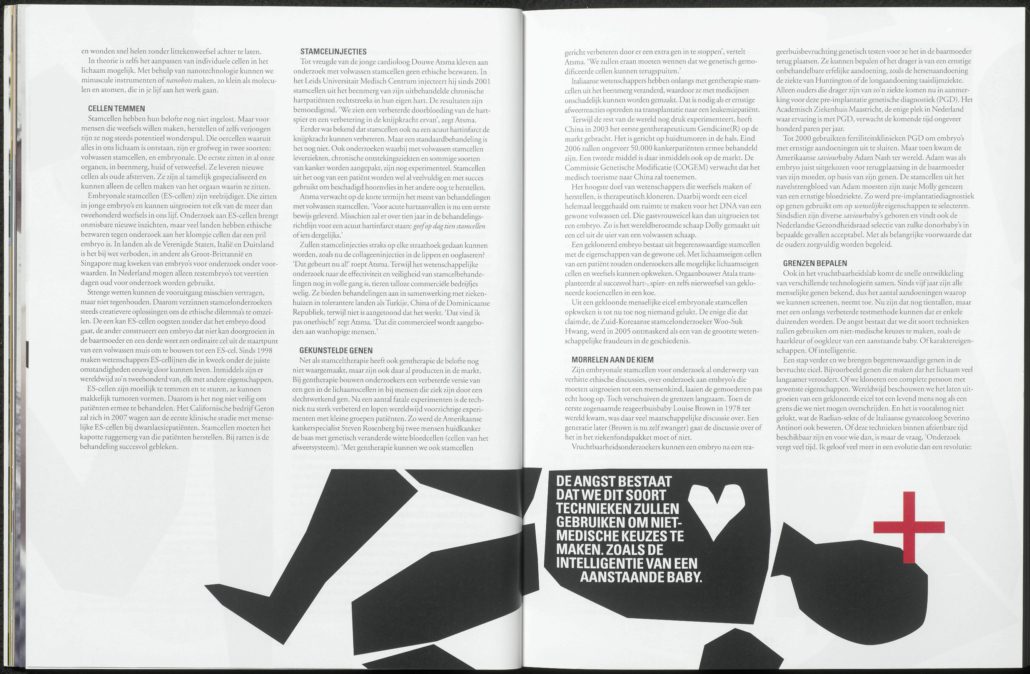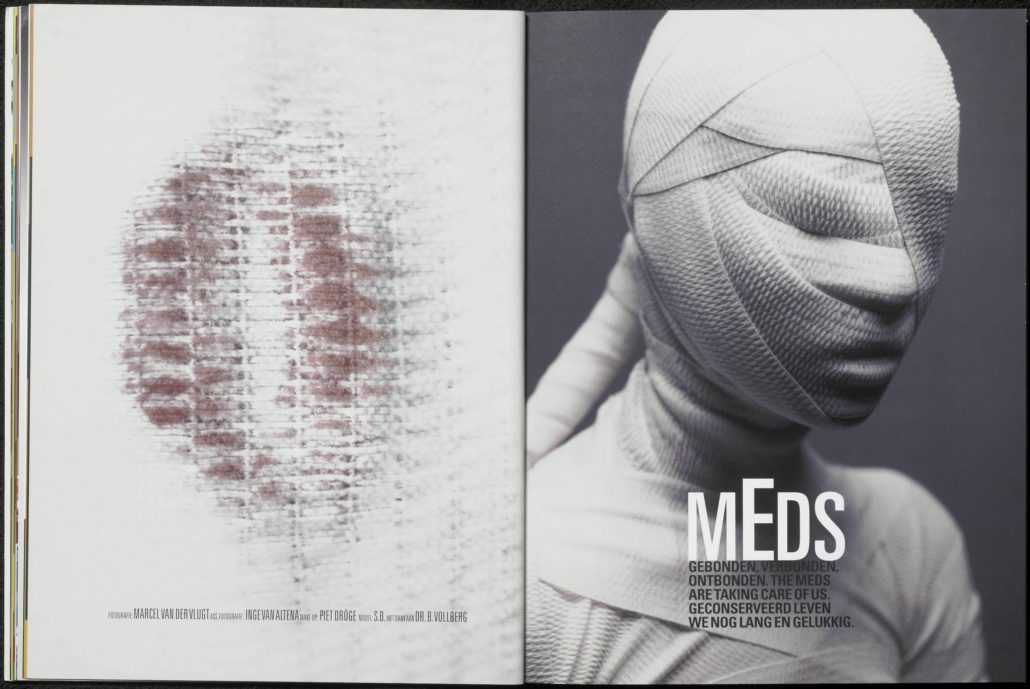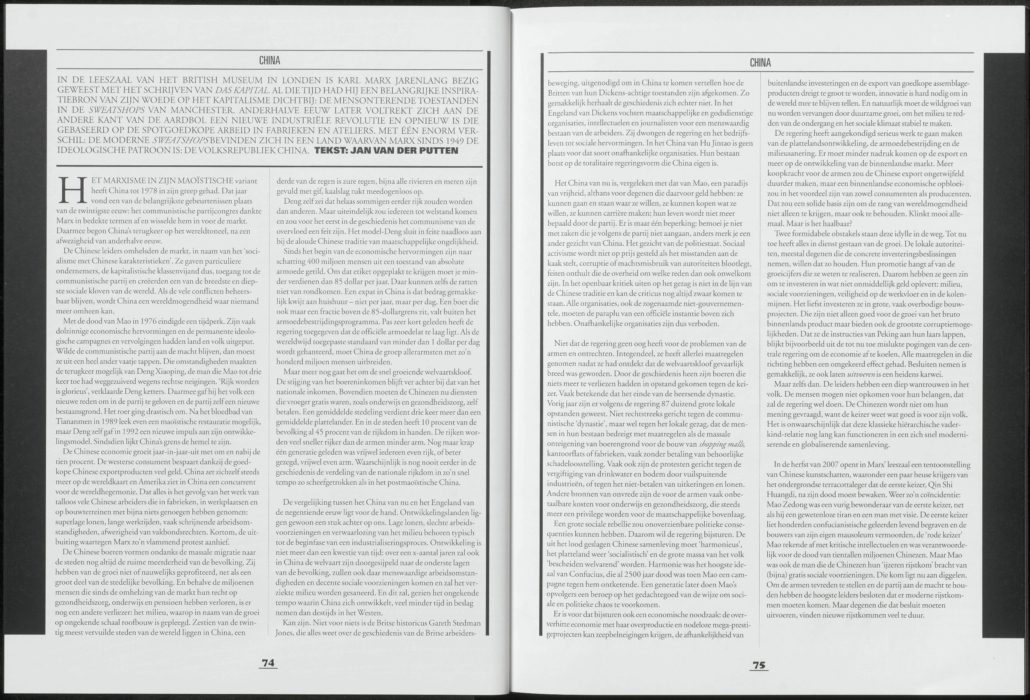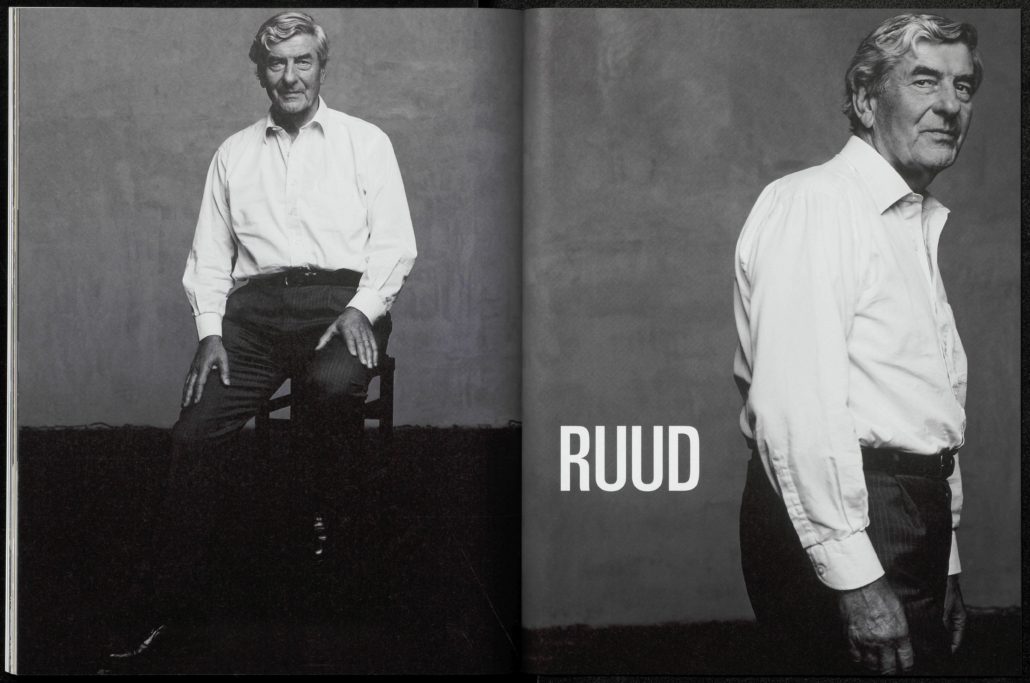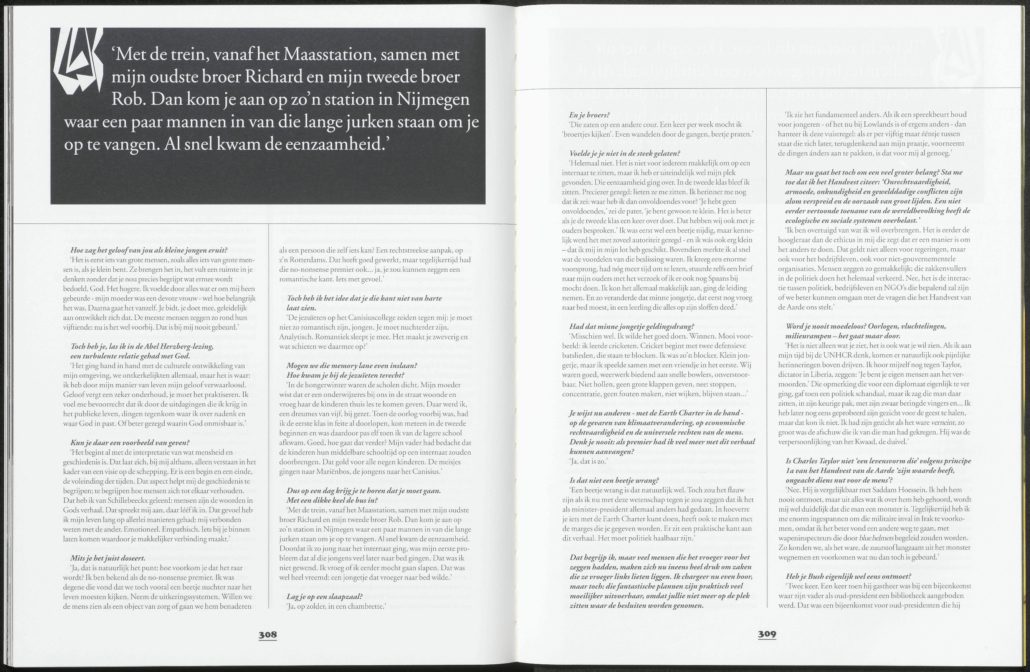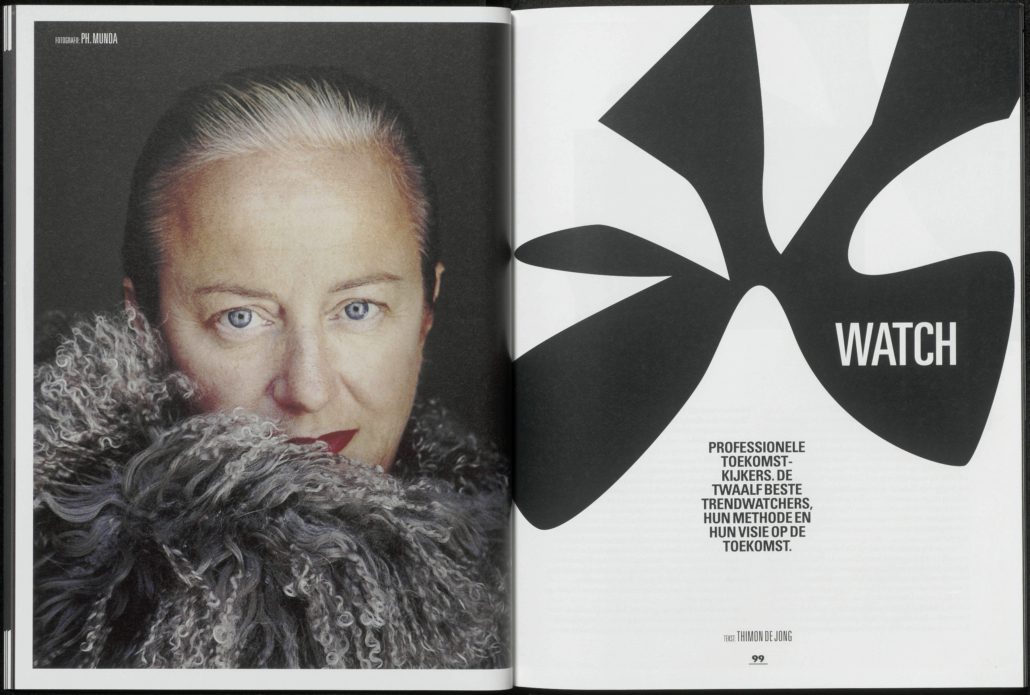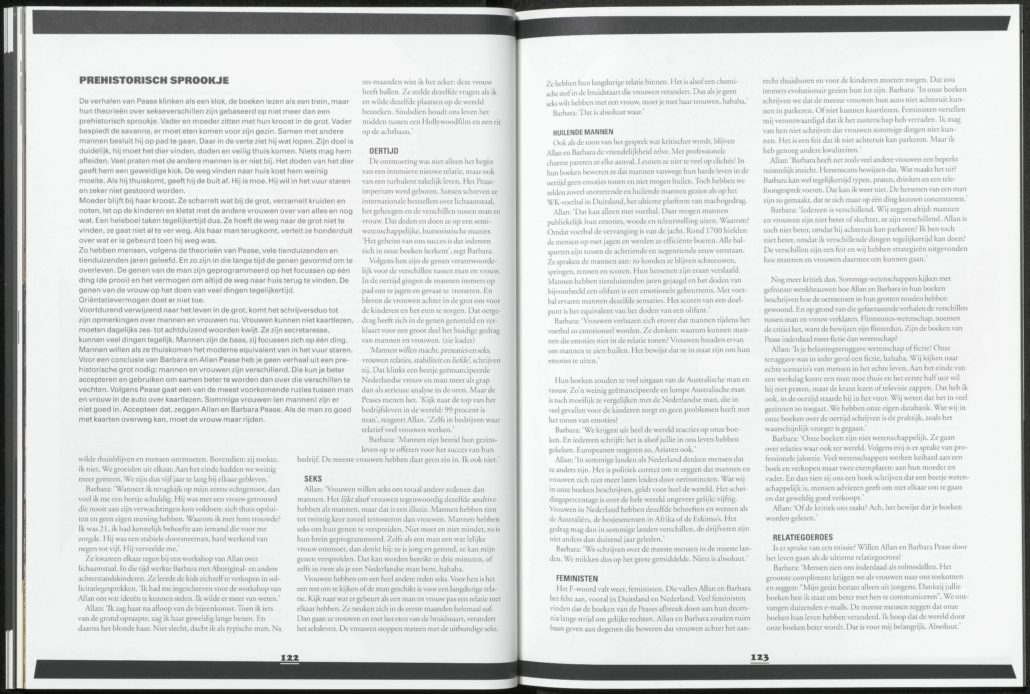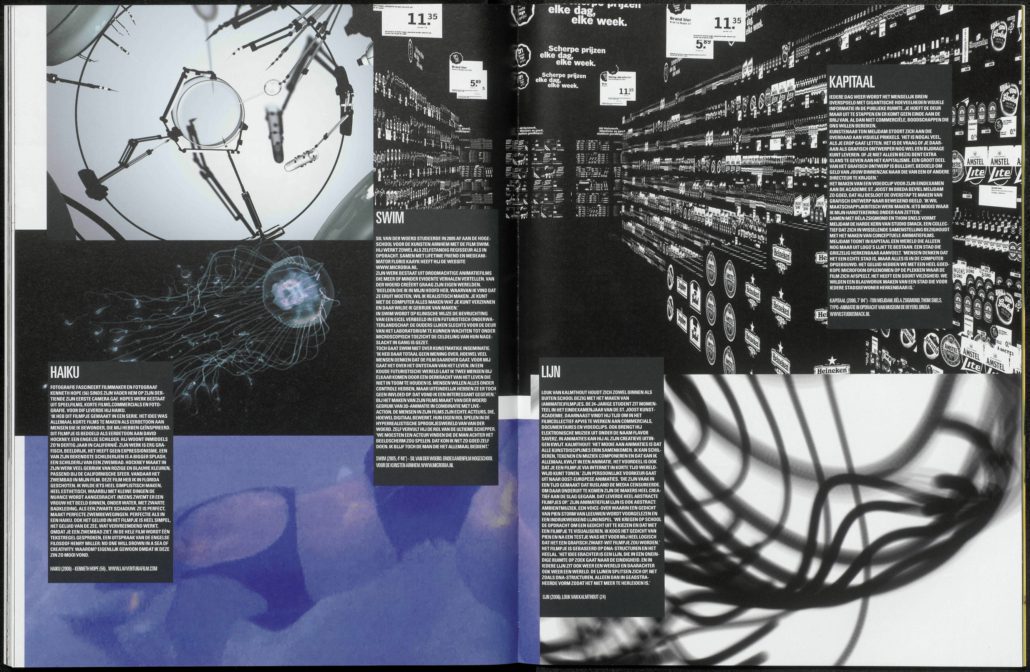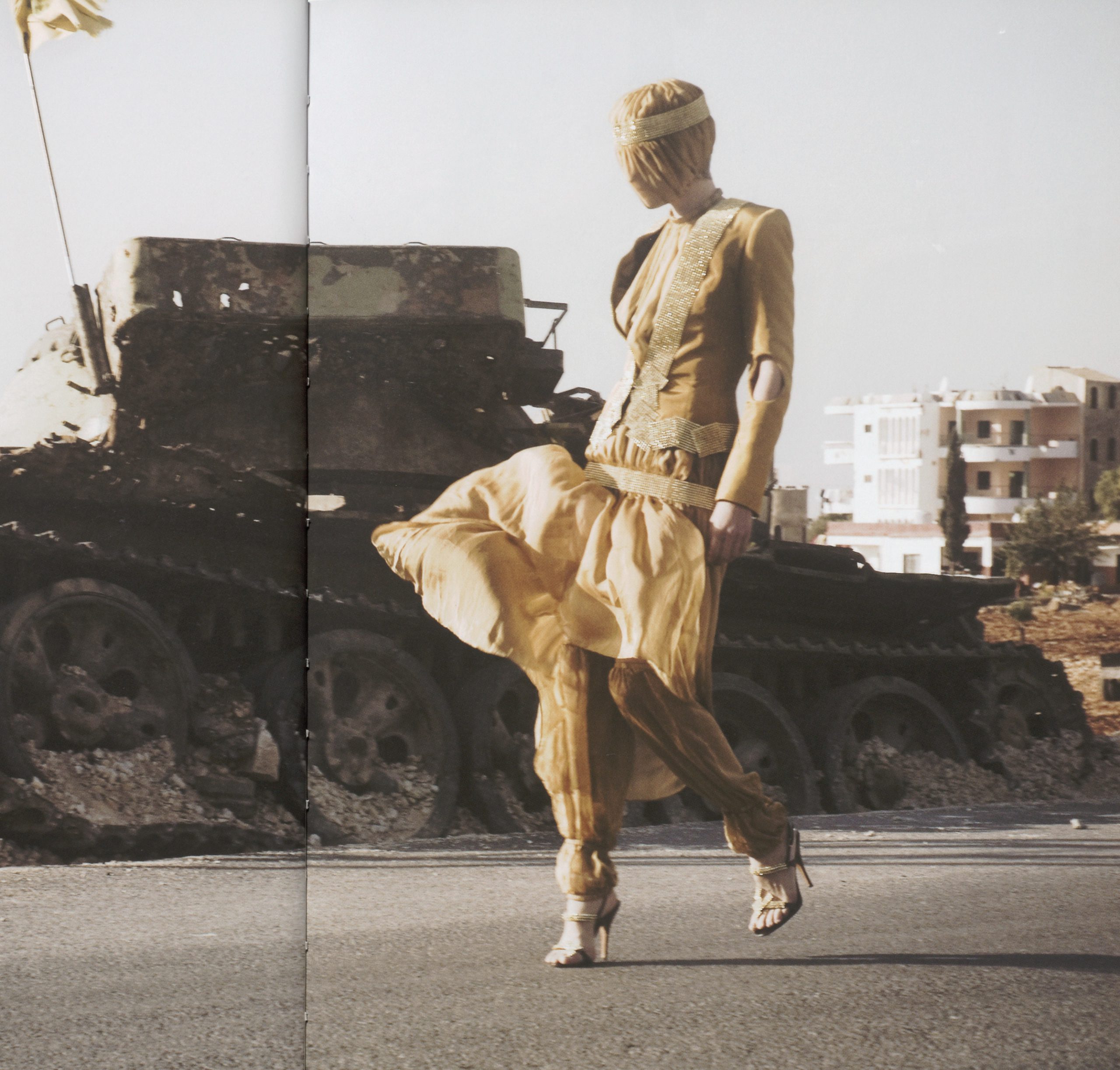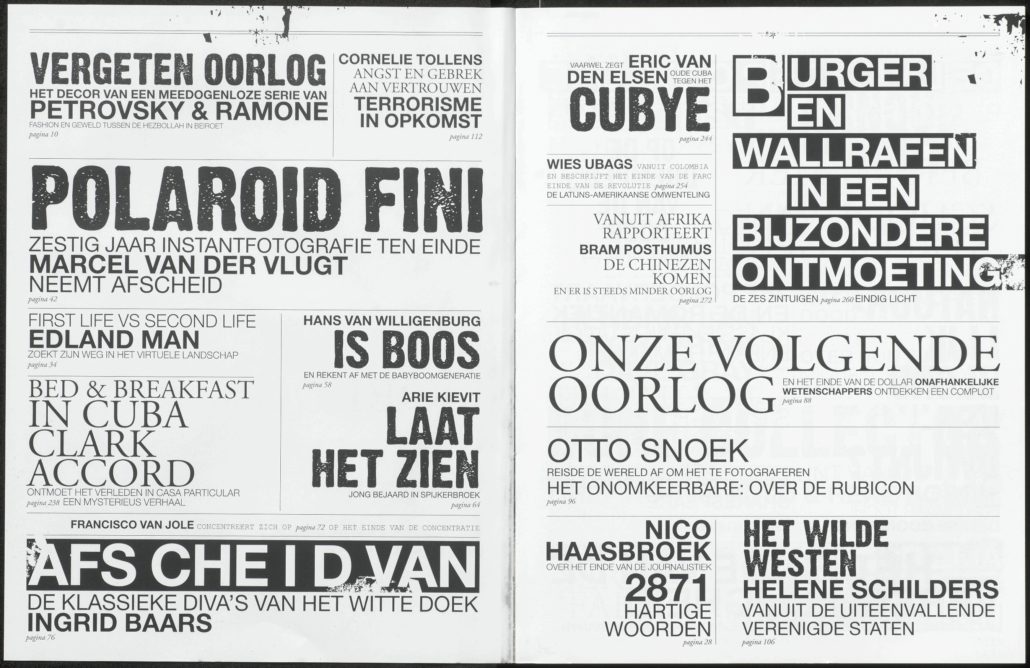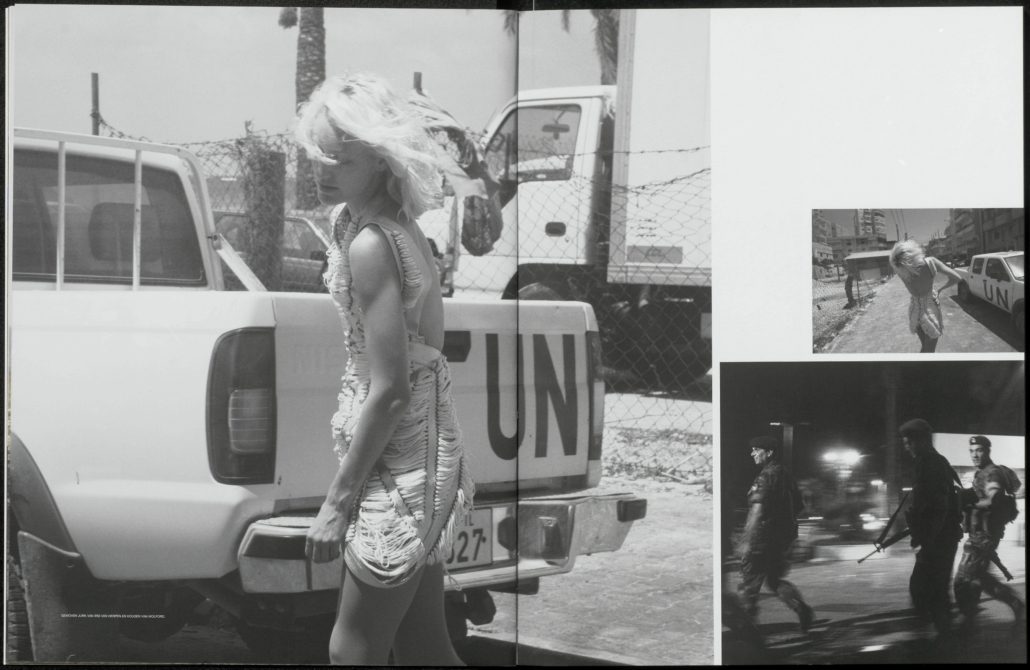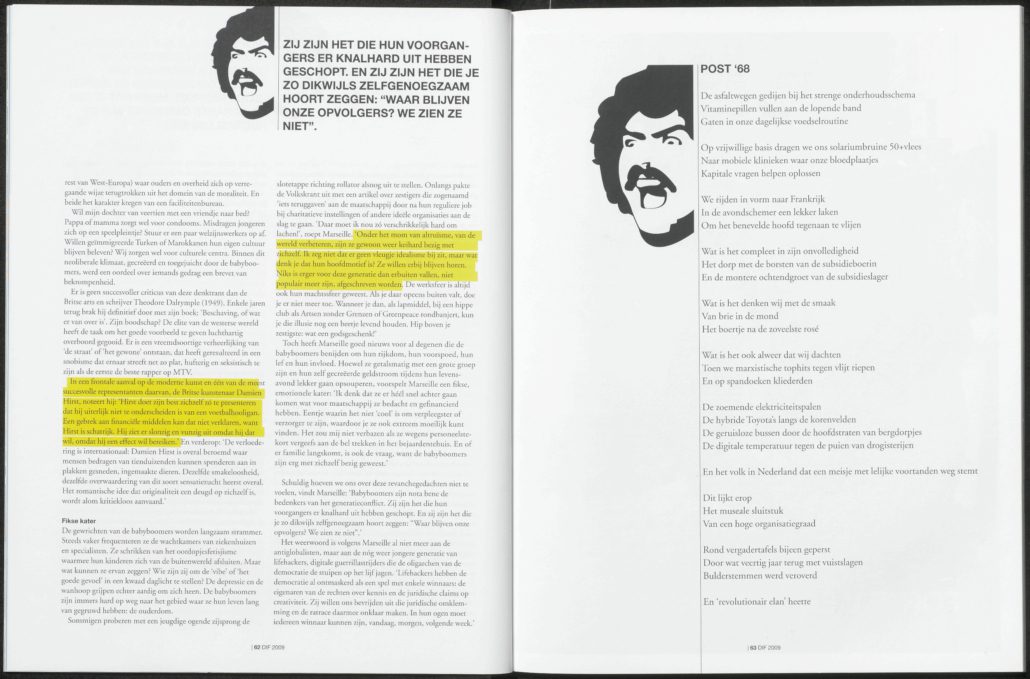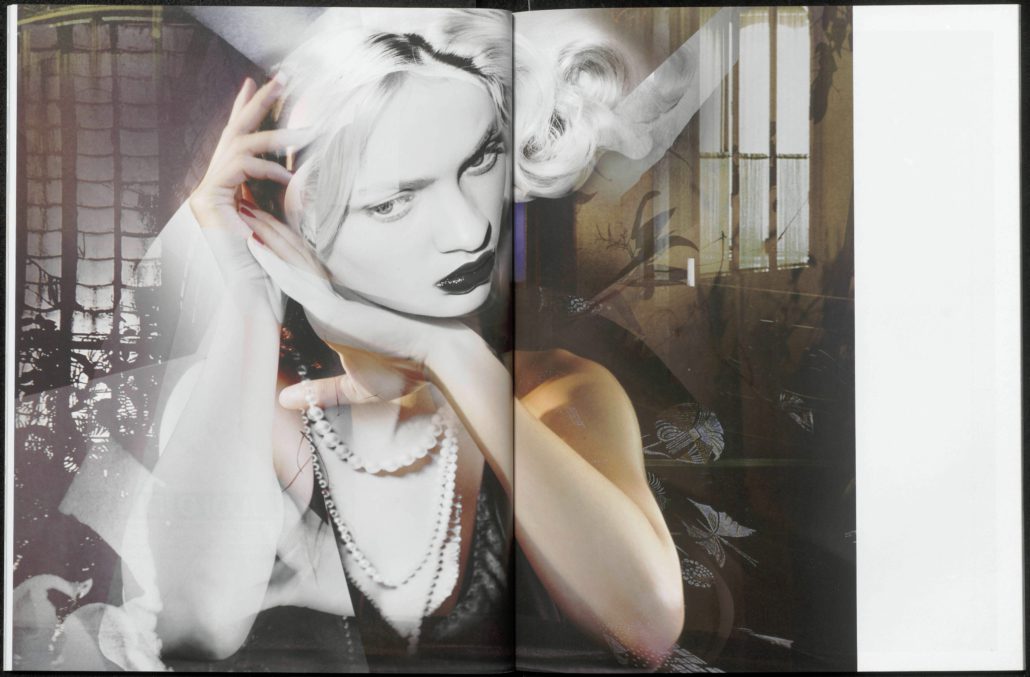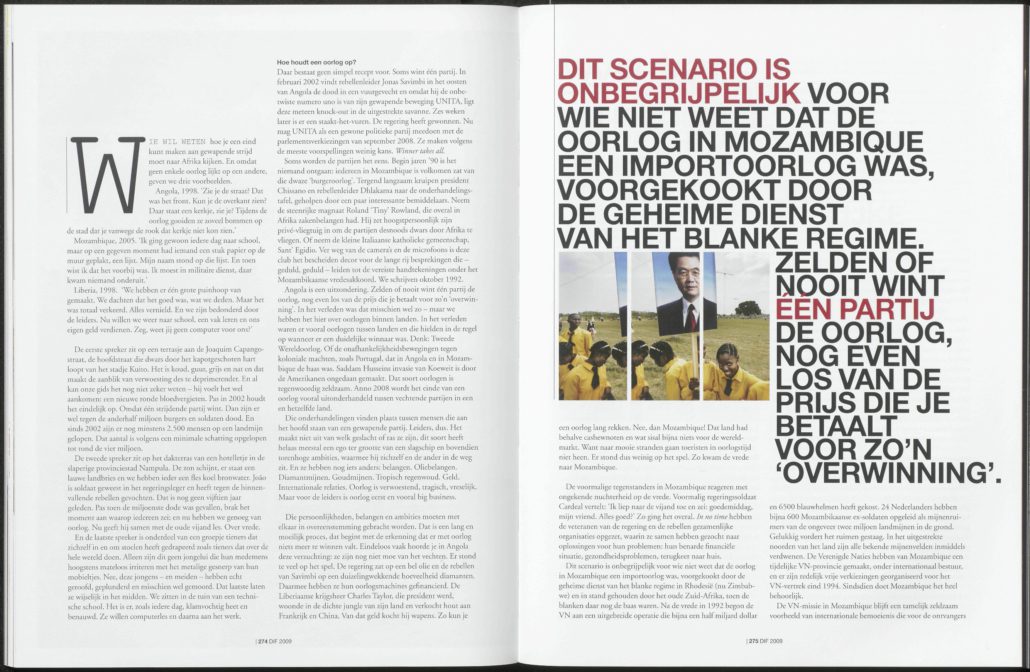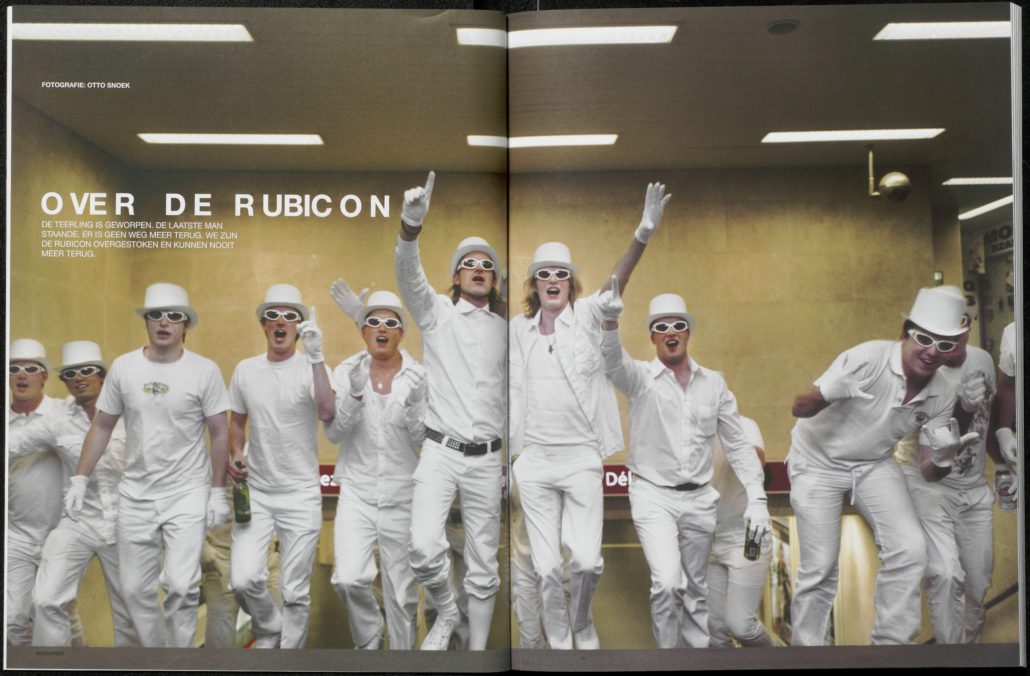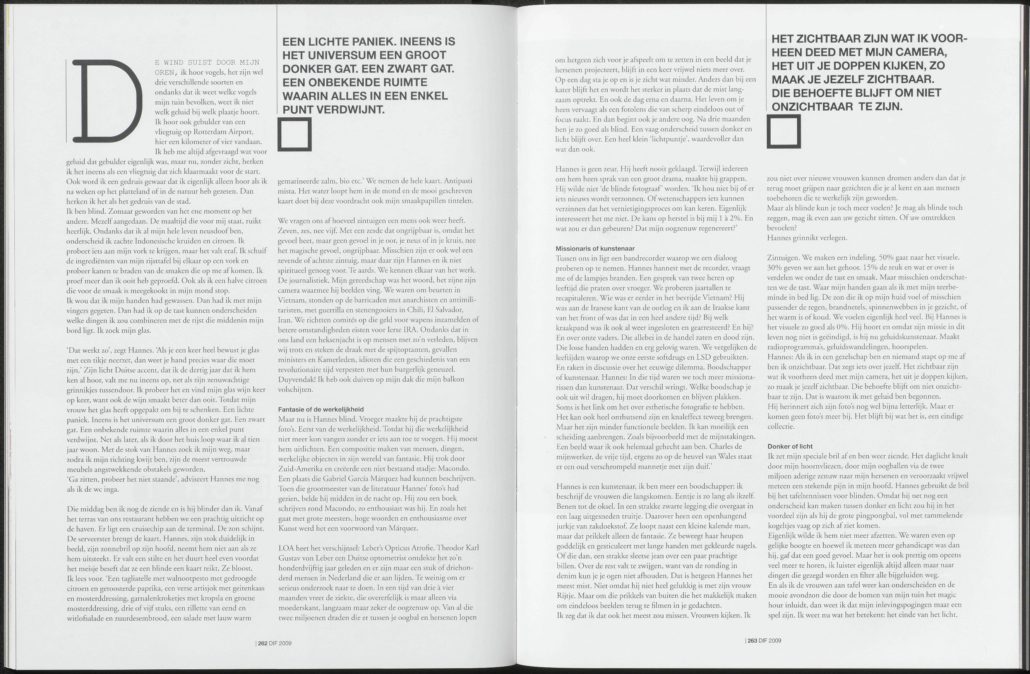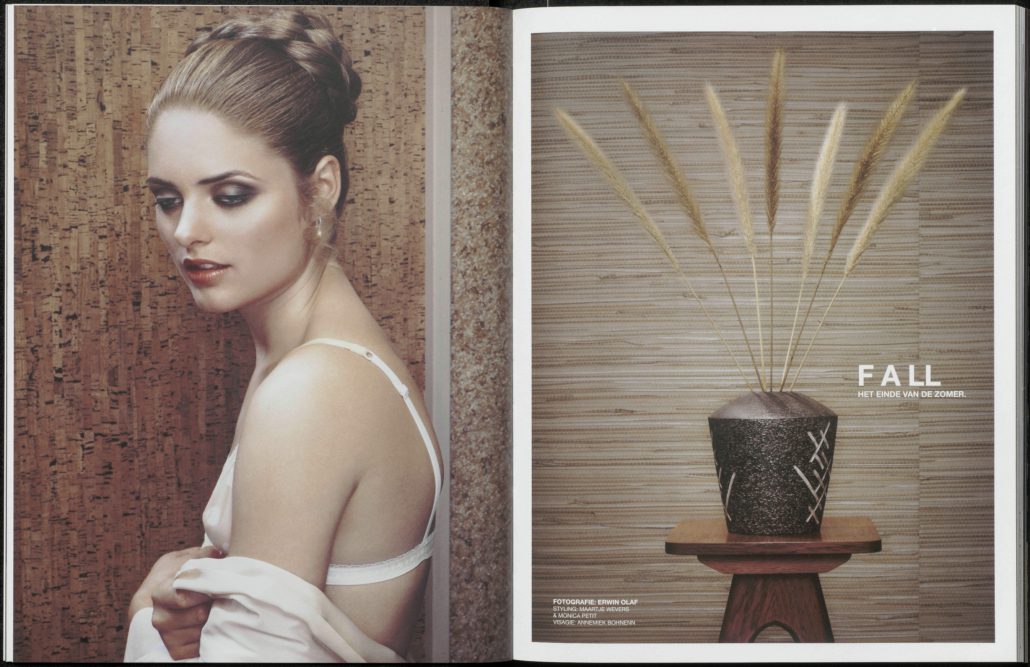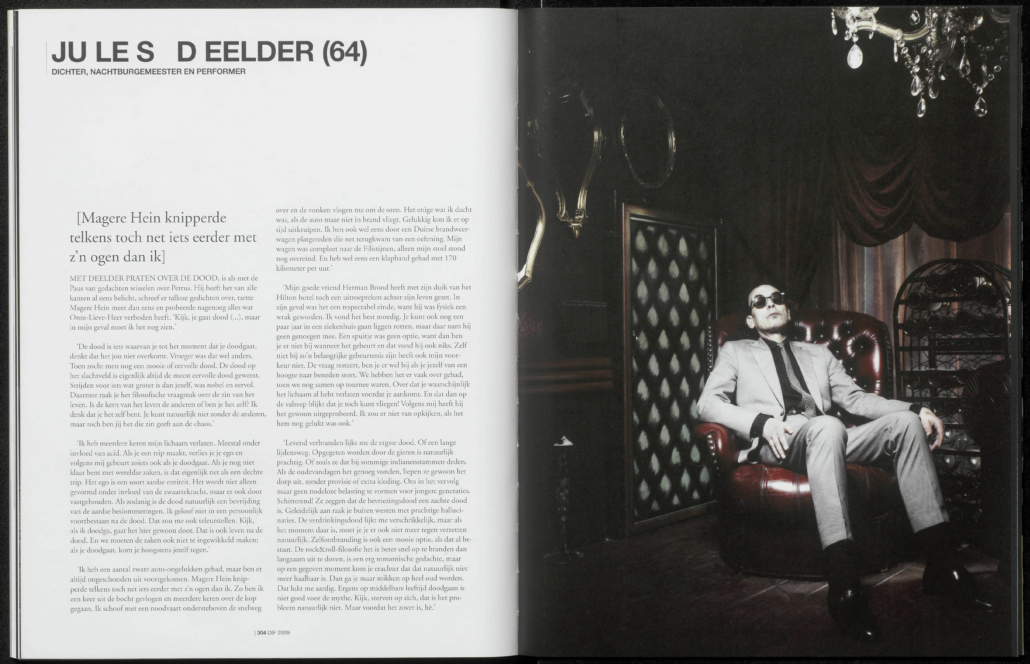dif #1
dif #2
Dif Issue 2 featured a series of current topics that would turn out to be timeless, such as the rise of internet pornography, emerging skepticism toward European unification and the Euro, the “new asocials,” the introduction of BRIC as a new geopolitical phenomenon, and the disillusionment with air travel due to the rise of low-cost airlines. Daring photography was interwoven with ultimate works of art.
The cultural clash between Flanders and the Netherlands was highlighted through a debate between well-known Dutch and Flemish figures, alongside a special focus on the “new Africa.” The issue included a unique interview with football god Johan Cruyff and American philosopher Francis Fukuyama, as well as a groundbreaking report by Erwin Olaf on homophobia in football that caused quite a stir.
dif #3
Dif Issue 3 was almost entirely dedicated to the concept of fakery. In a time when more and more things are losing their authenticity, and classic and vintage items are falling out of favor, this edition of Dif searches for what is real. The popularization of the USA is one of the topics, with contributions from Noam Chomsky shedding light on the subject. Another focus is the growing appeal of scandal magazines. Is the world truly moldable? Perspectives from guerrillas in Colombia to architects in Dubai seek to answer this question.
Fake products, facelifts, and fraudsters make their appearance in this issue, along with unique thinkers discussing current events, ideals that crumble, and the exploitation of children as marketing tools for impoverished nations.
dif #4
dif number 5
Dif 5 was themed “the end.” It would also be the last in the five-part series. Dif had grown too large for the Dutch-speaking market, and attempts to find a foreign publisher for the distinctive product led nowhere. Yet, as described in the editorial by Burger and Schol: “The end of one thing is the beginning of something else. We live on the threshold of a new era. One in which the dollar will no longer be the standard of welfare for our affluent West. Where the revolution in Central and South America is on its last legs—Castro’s legs. Where the baby boomer generation is aging, and the values of the sixties survive only in retirement communities. Terrorism sweeps away our privacy like alcohol.
The only places left to truly focus are arthouse cinemas and theaters. There, you’re not allowed to talk, only look in one direction, no calling, emailing, or texting. Nowhere else leaves you with so little else to do but watch and listen, and even this haven of peace is slowly being replaced by home cinemas.
The Dif crew decided to stop and they came back in 2018 with a new concept: a digital Dif 0.2.
.
